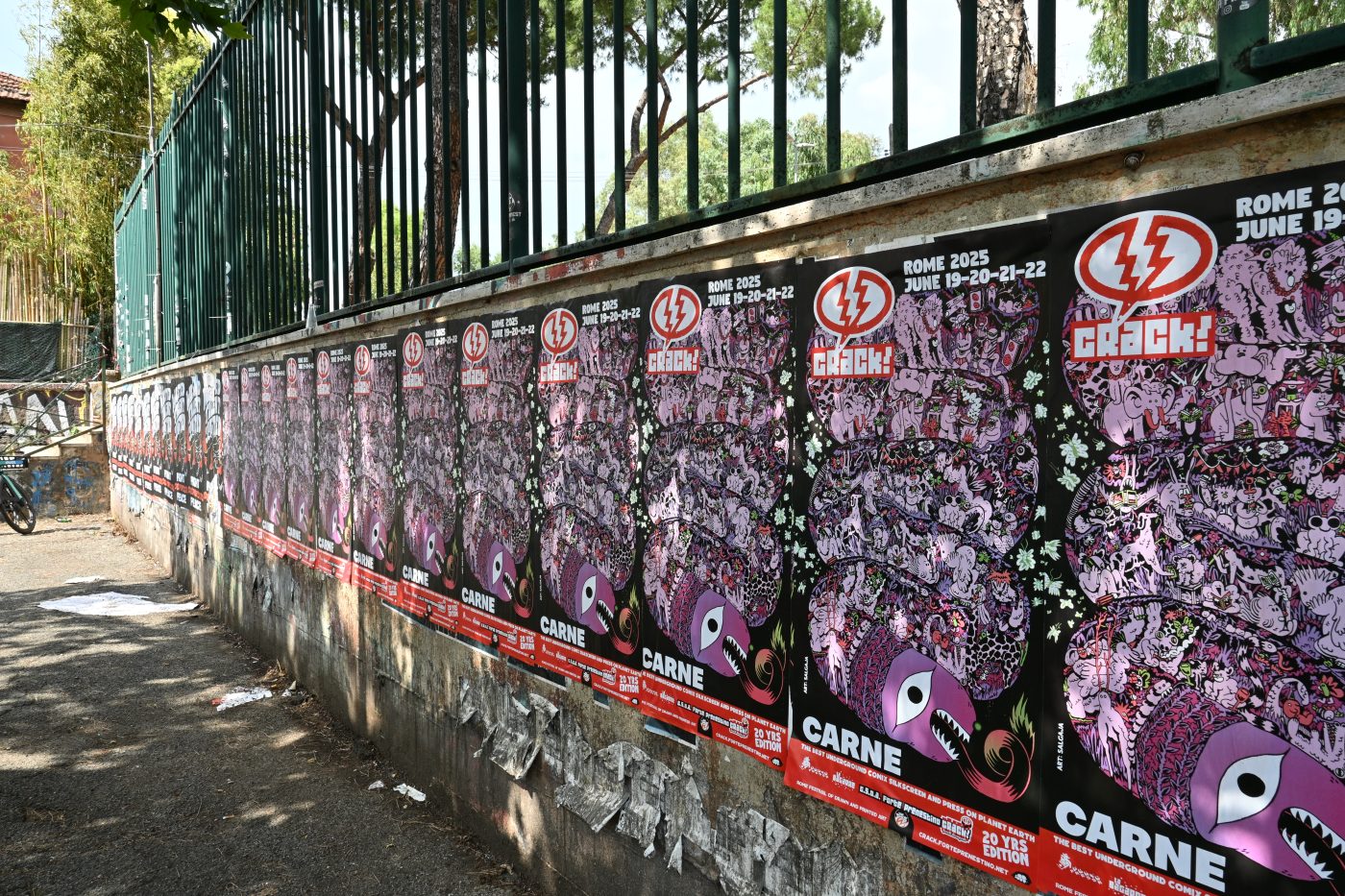
I remembered reading about the CRACK! Festival few years ago. A comics and zines festival in Rome in an abandoned fort where artists set up their tables in old prison cells! It sounded like a strange, beautiful and scary experiment. Then I heard from friends traveling from festival to festival that this one in particular was quite unique. There’s nothing like CRACK!, they said; it had to be experienced. Intrigued, I made a note to someday attend.
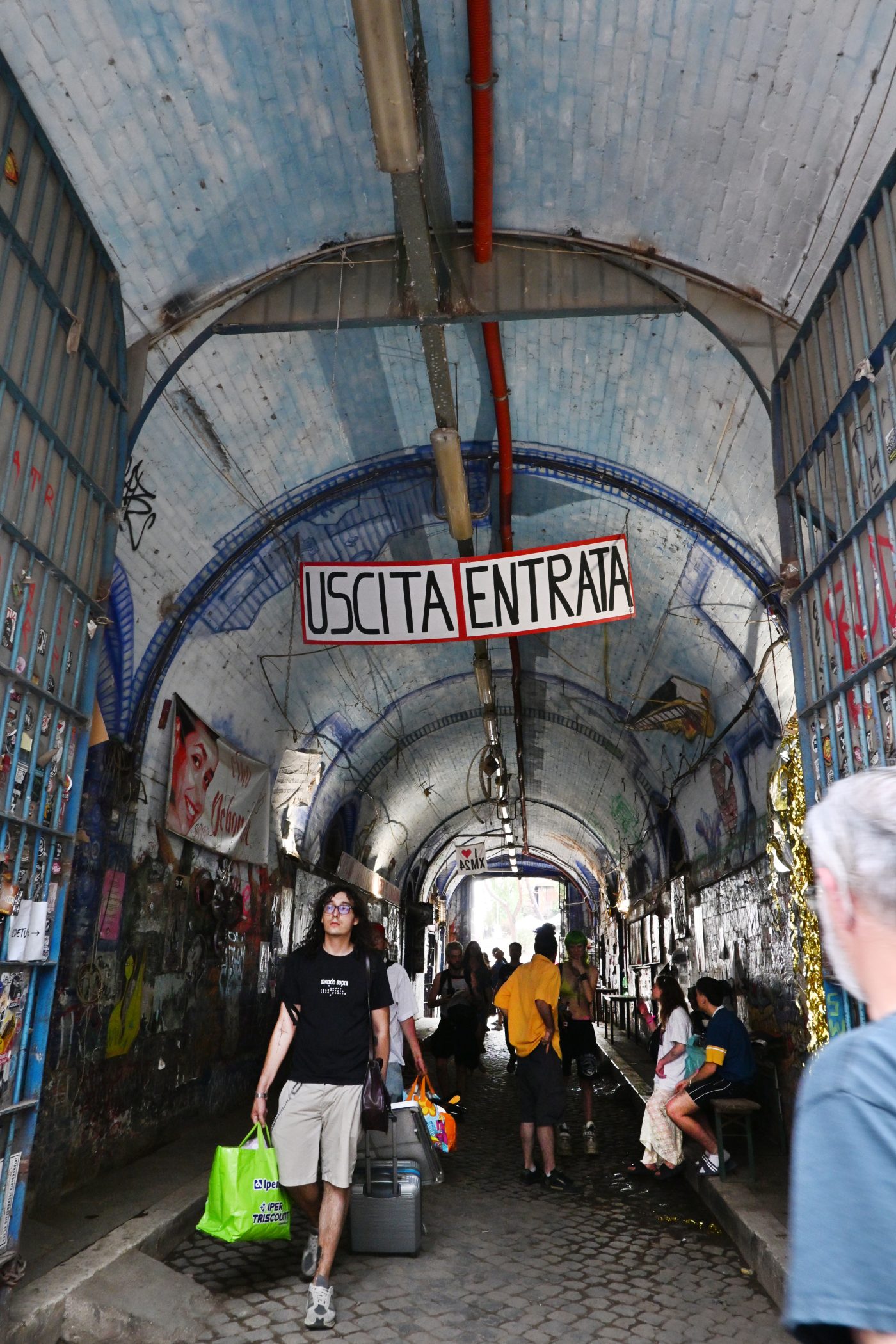
When Izabeau Legendre, a French-Canadian zine expert spearheading a zine renaissance movement here in Montreal (and cofounder of the review magazine Zine de zines) told me he was going this summer to attend and give a talk on Julie Doucet, I asked if I could join him on this adventure. The time had come to visit CRACK! I wrote to Valerio Bindi, the founder and coordinator, and asked for the opportunity to come and talk about our own pope of comics, Henriette Valium. That way, Izabeau and I could ask for a travel grant from the Quebec government.
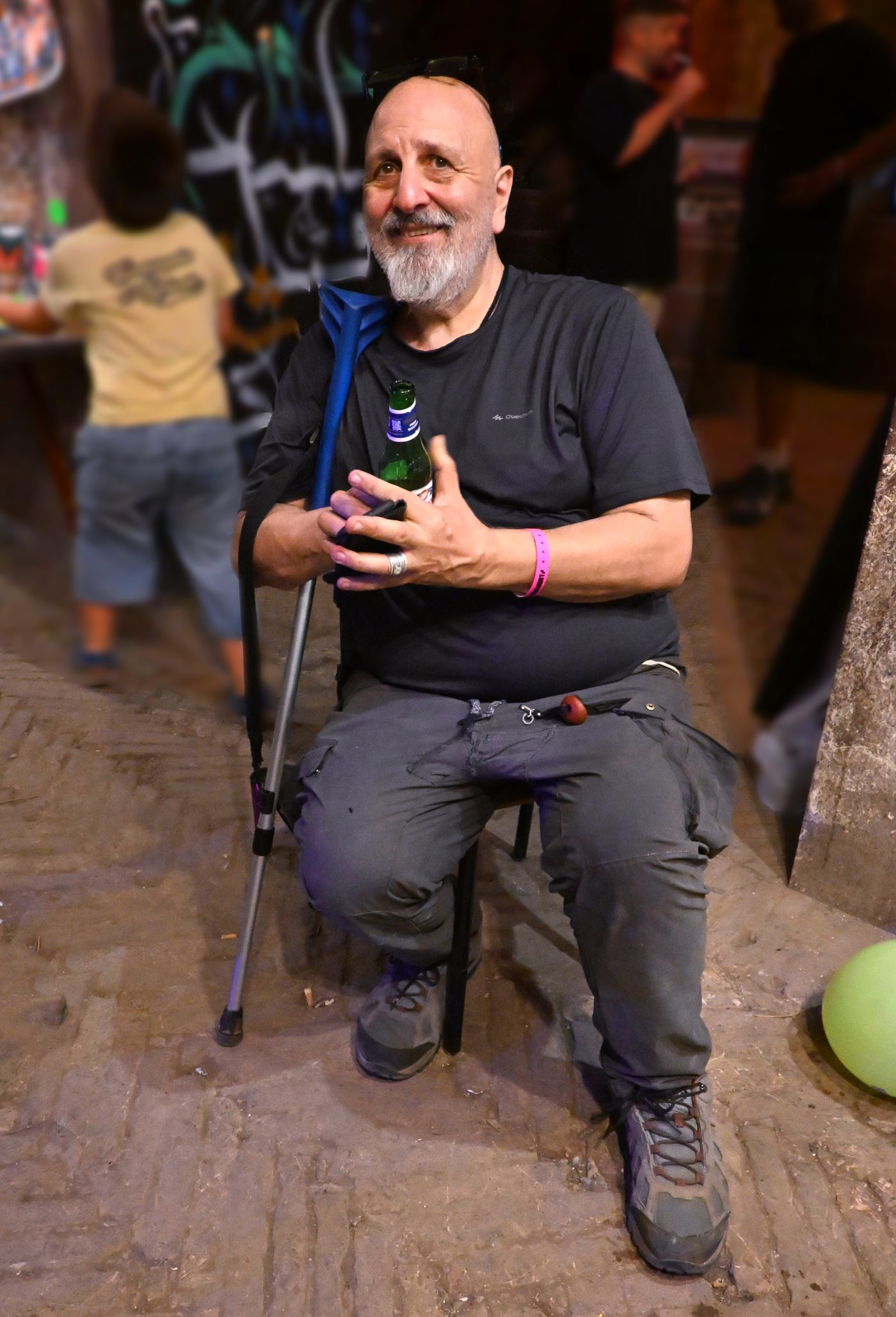
Bindi, I was about to discover, is the most gracious and cultured festival director you could ask for. He readily sent us official invitations, and we applied for a travel grant. Of course, grants don’t always pan out. A few days before leaving, our application was turned down. We had already bought our plane tickets and I badly needed a vacation, so we told Valerio the situation and confirmed we would both still attend. A mad dash was arranged with Valium's daughter Felixe, in charge of her father’s estate, to obtain the rights to exhibit 10 large prints of Valium’s comics at CRACK! in a section called the Cattedrale, where Izabeau and I would give a talk together. The idea was to see how the Italian public would react to Valium’s art. Valerio also expressed interest in mounting a future joint exhibition of Valium and Benito Jacovitti (who was an early influence on Valium), as way to explore unexpected connections between Italy and Québec.

Some Comics Journal readers might remember a recent article by Valerio Stivé on a Chris Ware exhibition in Italy. Valerio Bindi was one of the organizers for that as well. Working first as an architect, then teaching architecture while setting up light and stage shows, Valerio always had a love for fumettis (having written and drawn his own comic, Flashes, in 2010). He still writes reviews and does interviews with comic legends for one of the main Italian newspapers in Rome while his wife, Bambi Kramer (an integral part of the CRACK! organization), publishes her own comics and shorter works in Linus comic magazine (under the guidance of Igort).
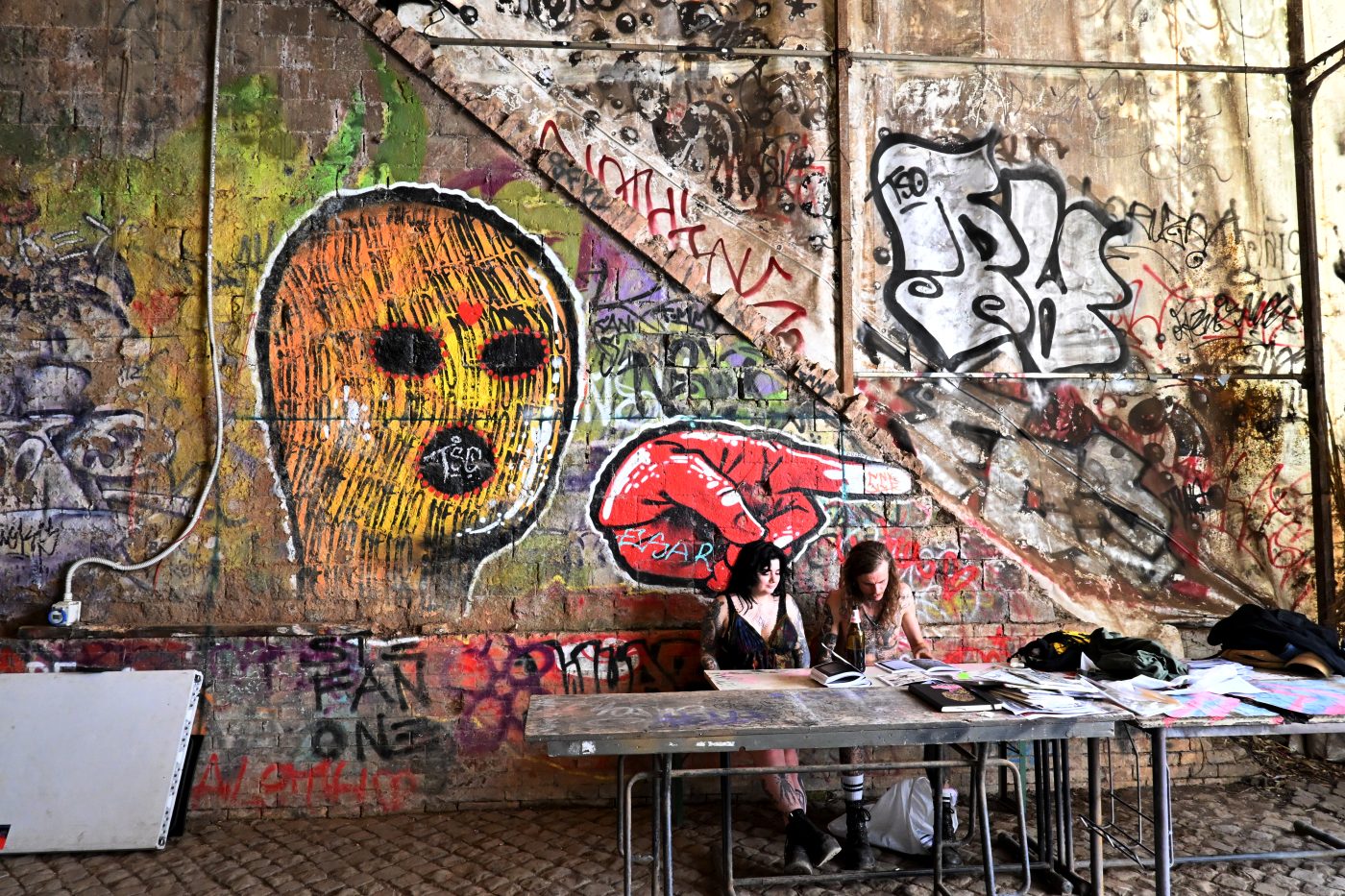
Izabeau and I arrived in Rome on a Thursday, the day the festival opened. It is hot in Italy at this time of the year and a lot of stores are closed in the afternoon, so the hours of the festival were from 4 p.m. to midnight. A great frenzy welcomed us. The Forte Prenestino CSOA is located in what looks like a huge nature park surrounded by walls. After entering the park, you cross an old drawbridge and literally enter a real fort. It has a curious history, as it was built in the 19th century but never used. In the 1970s, it was taken over by squatters. Some anarchists moved in, built themselves living quarters and have been residing there ever since; dedicating it to creativity and freedom. Over the years, It has hosted various political and artistic events, including one celebrating marijuana that was shut down by police after many editions. In 2005, the first official edition of CRACK! was held, making this year’s event its 20th.
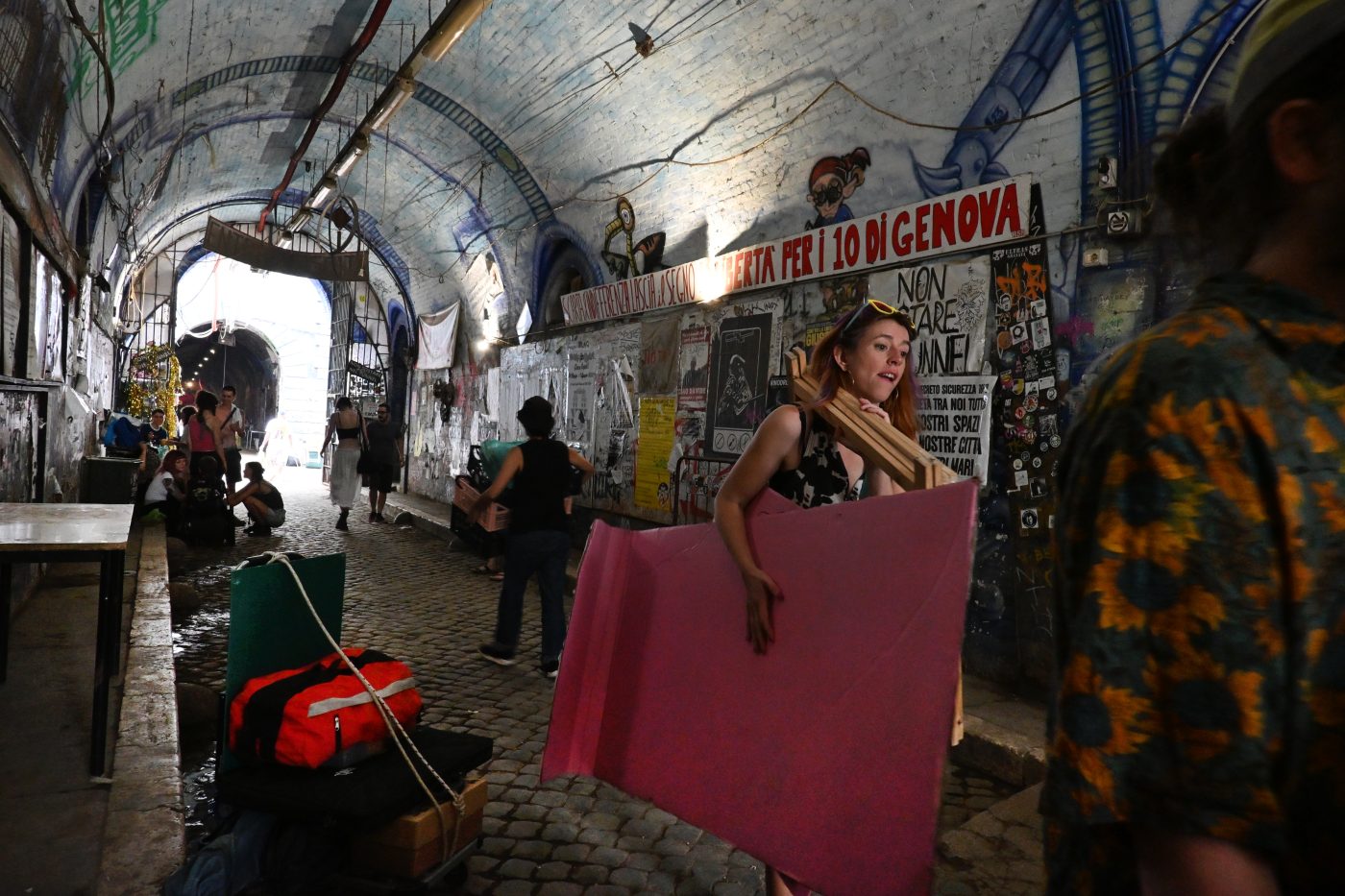
So how does CRACK! work? Artists are invited to attend up to a week before the opening. There are dormitories on location, parking spaces for those traveling in camping cars, and green spaces all around the Forte to pitch a tent. A large number of foreign artists stay in the Forte during the festival. There is a silkscreen workspace where you can print books, t-shirts and posters. Artists are invited to paint and decorate the space they will use to sell their wares. A communal kitchen feeds the artists; all are invited to contribute food, cook for others and keep the Forte clean. This creates a strong sense of community among the artists coming from around the world. This year, there were participants from as far as Sweden, Peru, Colombia, the Balkans and China. Considering artists are often loners used to creating by themselves, bringing all of them here and having them work together is an amazing achievement.

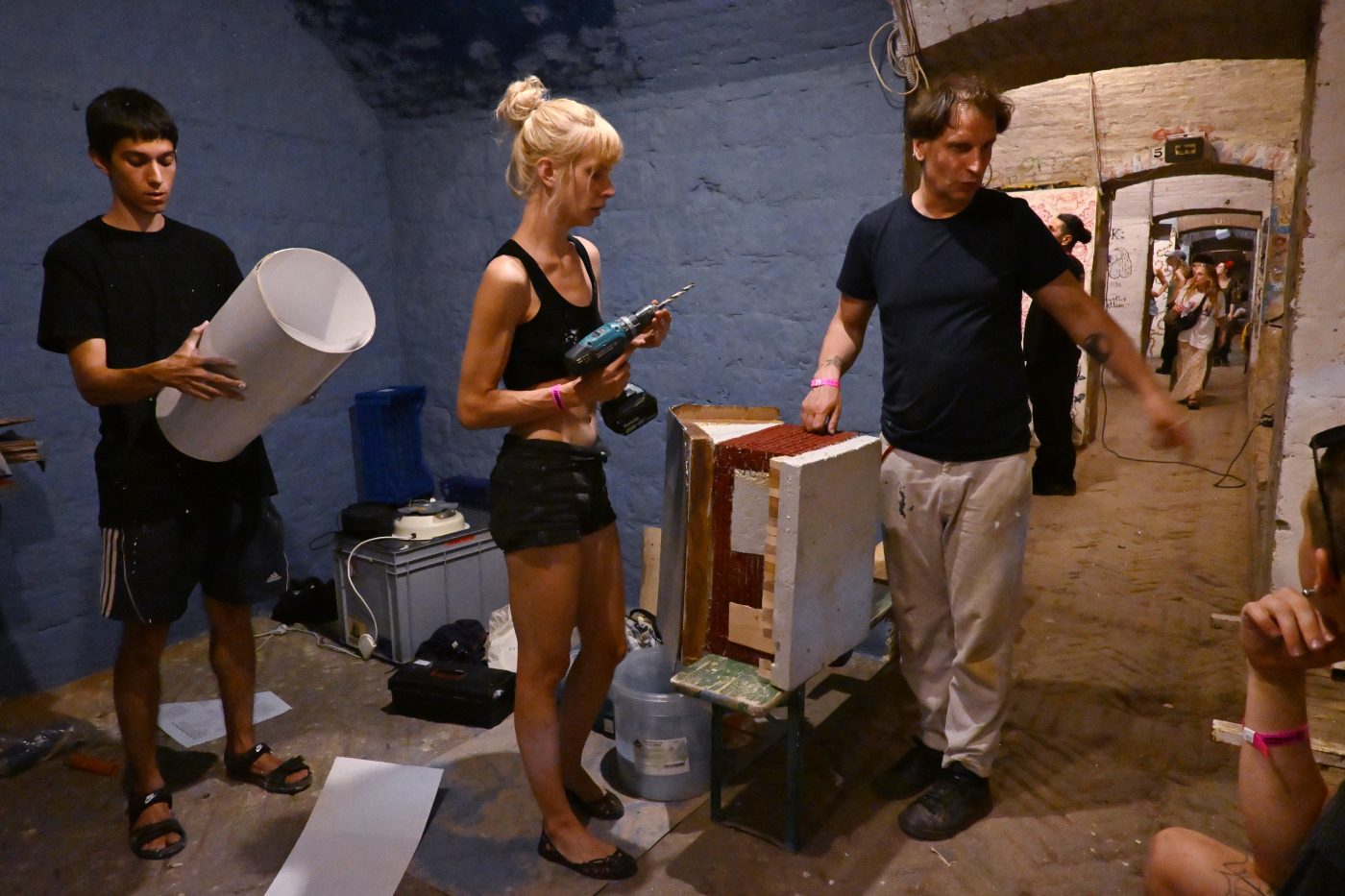
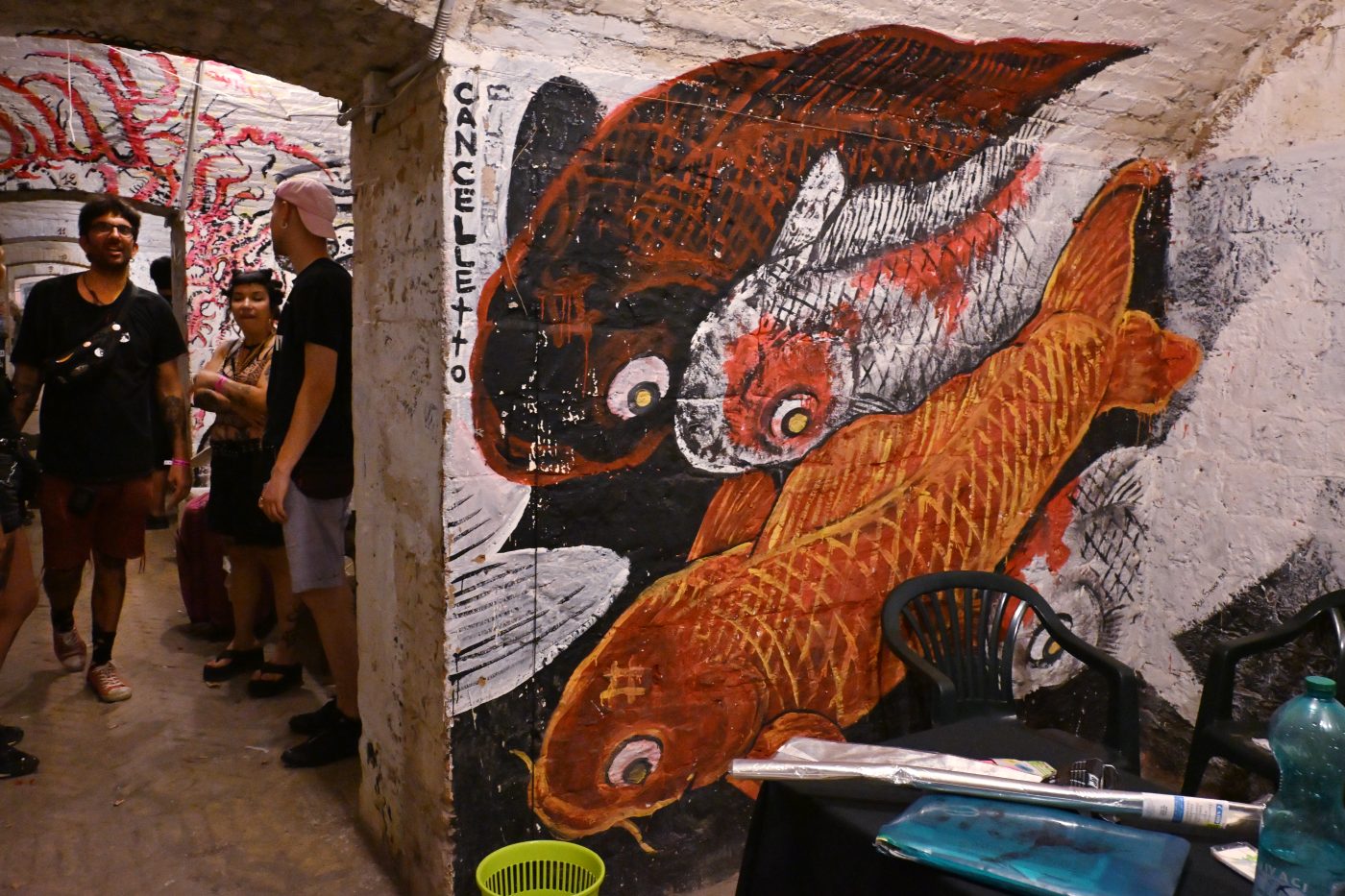
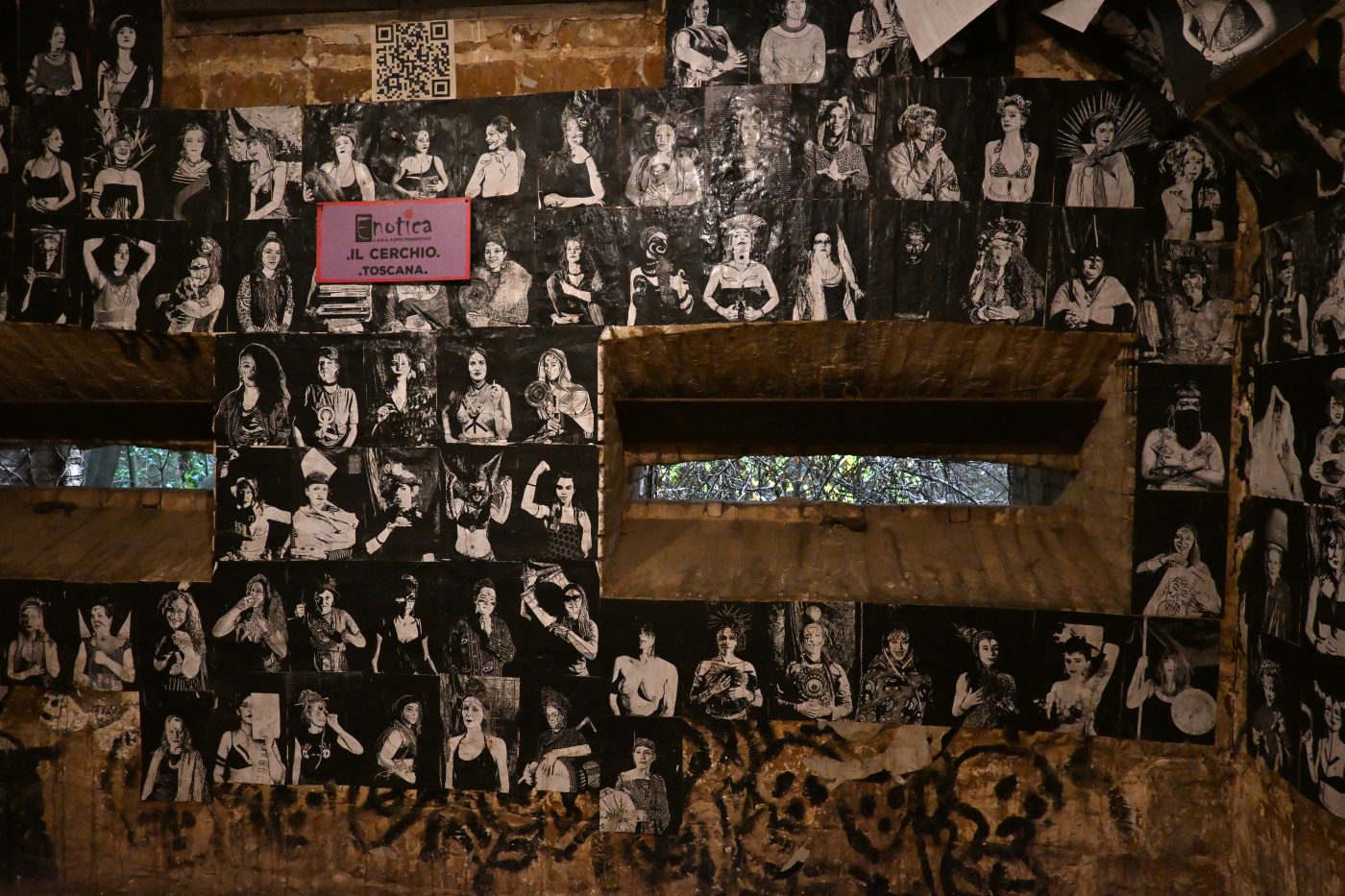
This way, if you arrive early, you get to know and discover other authors and artists first hand. Almost none of the books they bring are available in regular bookshops. Some of my own discoveries include Éditions Dentata, Éditions Jean Guichon, Violette Vaisse, Alpraz, Belasttian, Giulia Bisturi, Antoine Erre, Margot Mourrier Sanyas, Francesco Panatta, Bambi Kramer, Sara Bipede, Helene Meyssirel, Thuderporn, Laur Pontak, Morgane Griffoul, Jorge Perez-Ruibal and Rakel Stammer. Just to name a few of the wonderful artists I met.
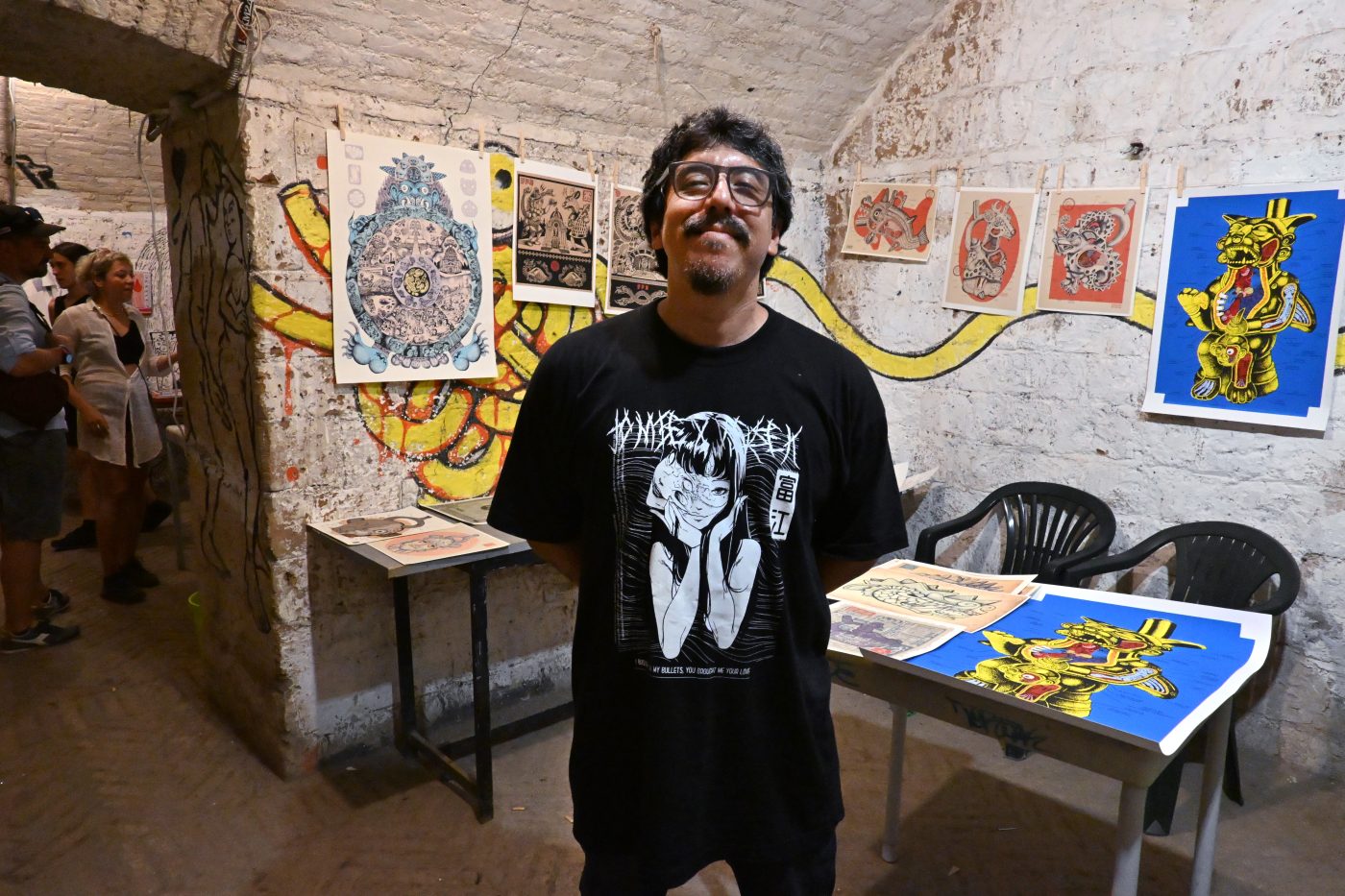
I asked Jorge Perez-Ruibal what brought him all the way to Italy from Peru to sell his silkscreened books and posters:
“I work in my studio in Lima. It was my friend and editor, Martín López Lam — who had attended the festival several times and had published my work through Ediciones Valiente — who first told me about it. We rented a house near Forte Prenestino CSOA with friends from Spain and Latin America. Honestly, I had no idea it was the biggest event of its kind in Europe. I wasn’t expecting something so massive — it turned out to be incredible, truly memorable. What struck me the most was how diverse and unique the artists were. There was this raw, shared energy running through the Forte — it didn’t feel like a regular venue, more like something alive, constantly shifting and full of meaning. The presence of so many international guests gave it the feeling of a temporary autonomous zone. It reminded me that creative work can still bring people together — and challenge the way things are. I brought some pieces from my "Neohuaquero" project, which reimagines pre-Columbian cultural fragments in dialogue with contemporary chaos. To present it in a space like Forte felt meaningful — it echoed with its anarchic, layered history. I came mainly to reconnect with friends and share some of my work, but what I found was something else entirely: a charged, collective atmosphere that stayed with me long after the event ended.”


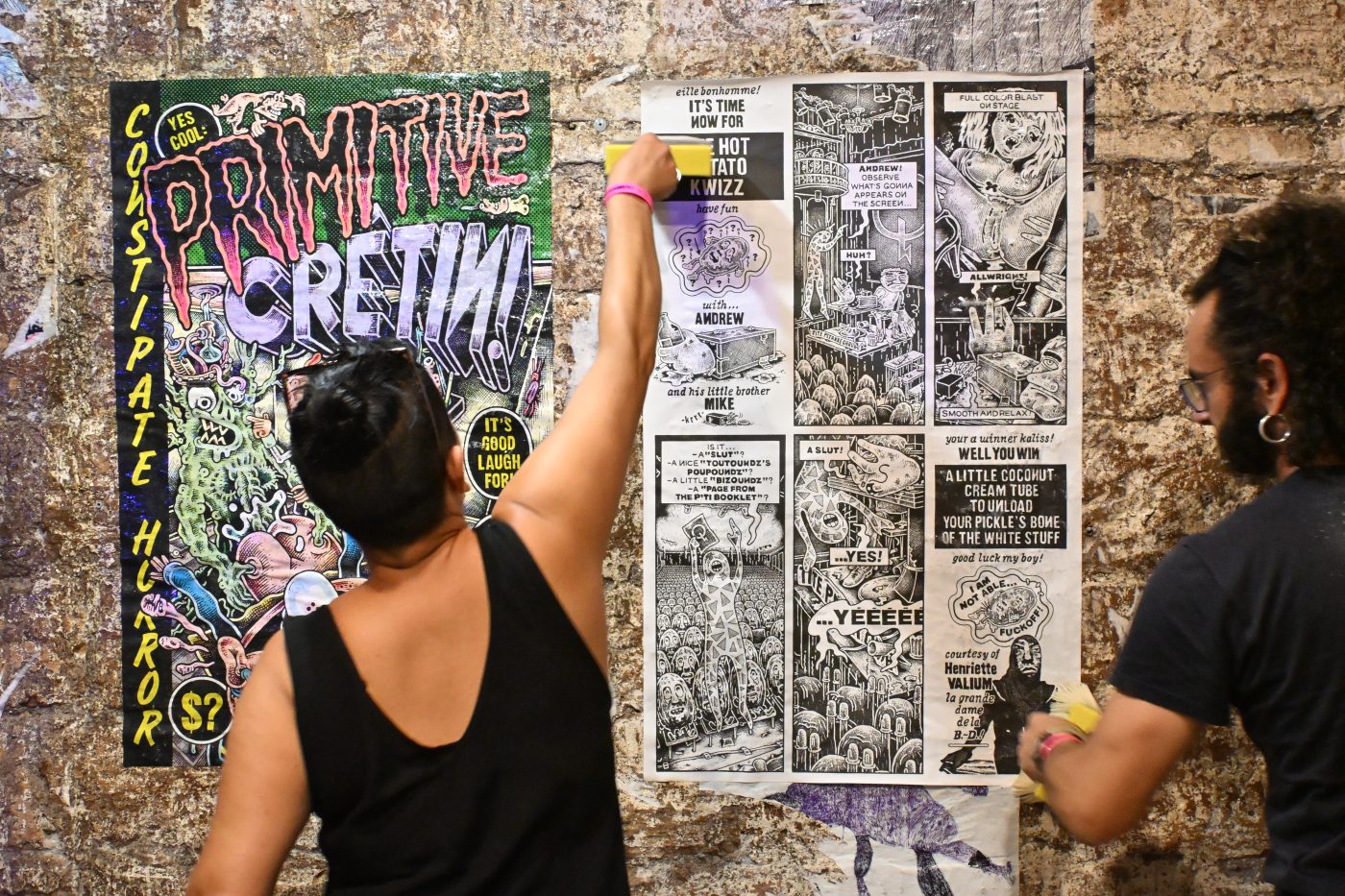

A. T. Pratt, an American cartoonist from New York City had this to say about his two visits:
I travel to sell my comics as much as I can. Last year I set up tables of my work at 36 conventions, festivals and expos. The CRACK! Festival in Rome is one of my favorites and truly unique. I went in 2023 and 2024. You know CRACK! is special just from looking at their exhibitor application. Each year has an overarching theme ... and what on some festivals' website might be some mild lip service to equality and inclusion here reads like a manifesto. This is a festival that believes in things, and reading such strong anti-fascist and anti-discrimination statements while you apply lets you know what kind of show it will be. During the four days it runs, it creates a kind of community. People are there to share their art, enjoy countless musical performances, and in many cases, stay overnight in the walls of the Forte Prenestino CSOA. Being able to stay there during the festival helped so much to make it economically feasible for me, and others, to come from far away. When I landed in Rome two years ago to participate for the first time, I walked through the park and saw a massive castle-like entrance and walked into the giant structure, walls covered in art with huge sculptures hung around in various places, and I was already amazed before the artists and attendees flooded in. It’s one of very, very few festivals I have been to that has a reason to be there for attendees besides buying the art and meeting artists — it is an unforgettable location, run by people who care about building a better world one festival at a time.
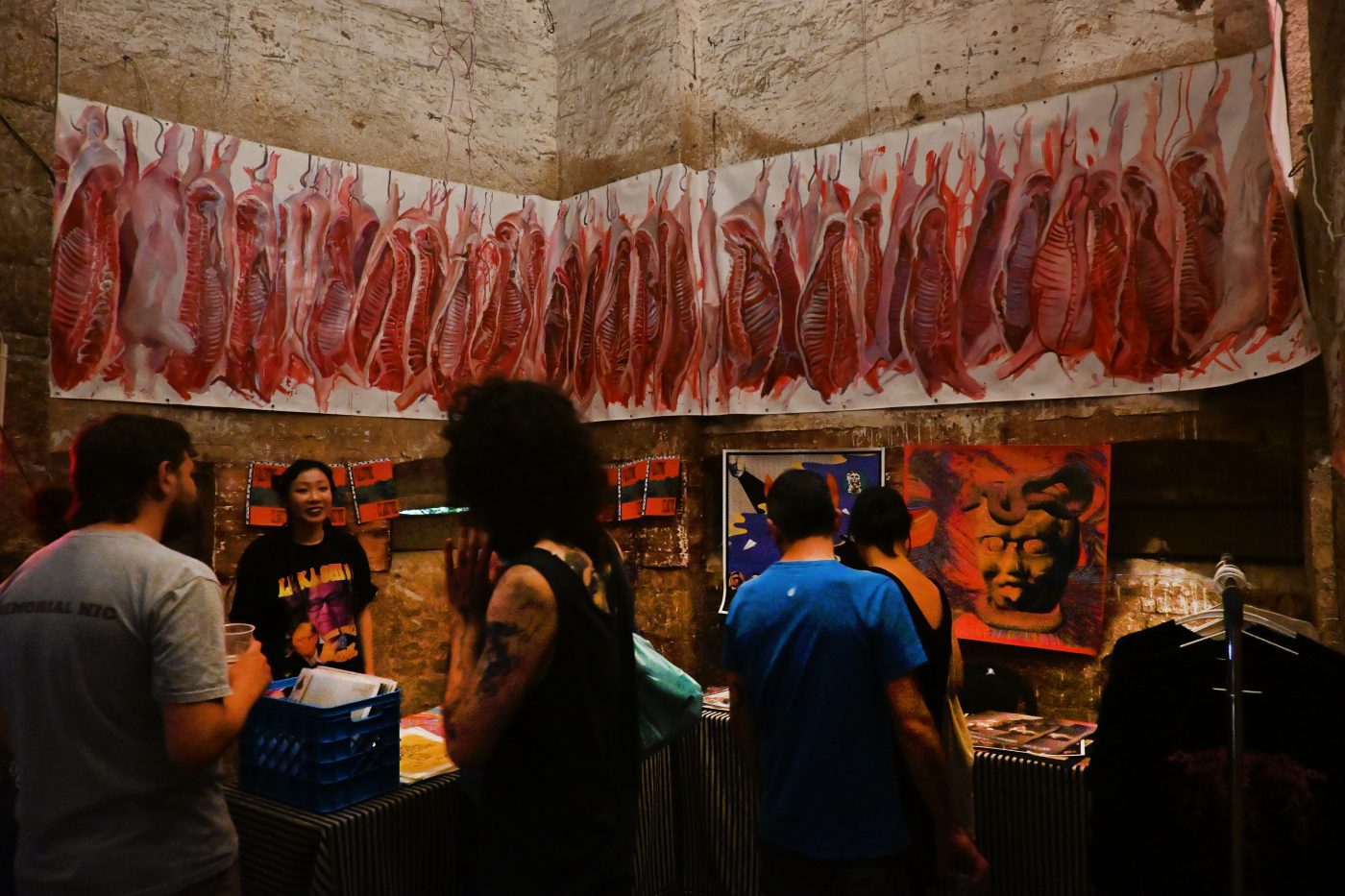
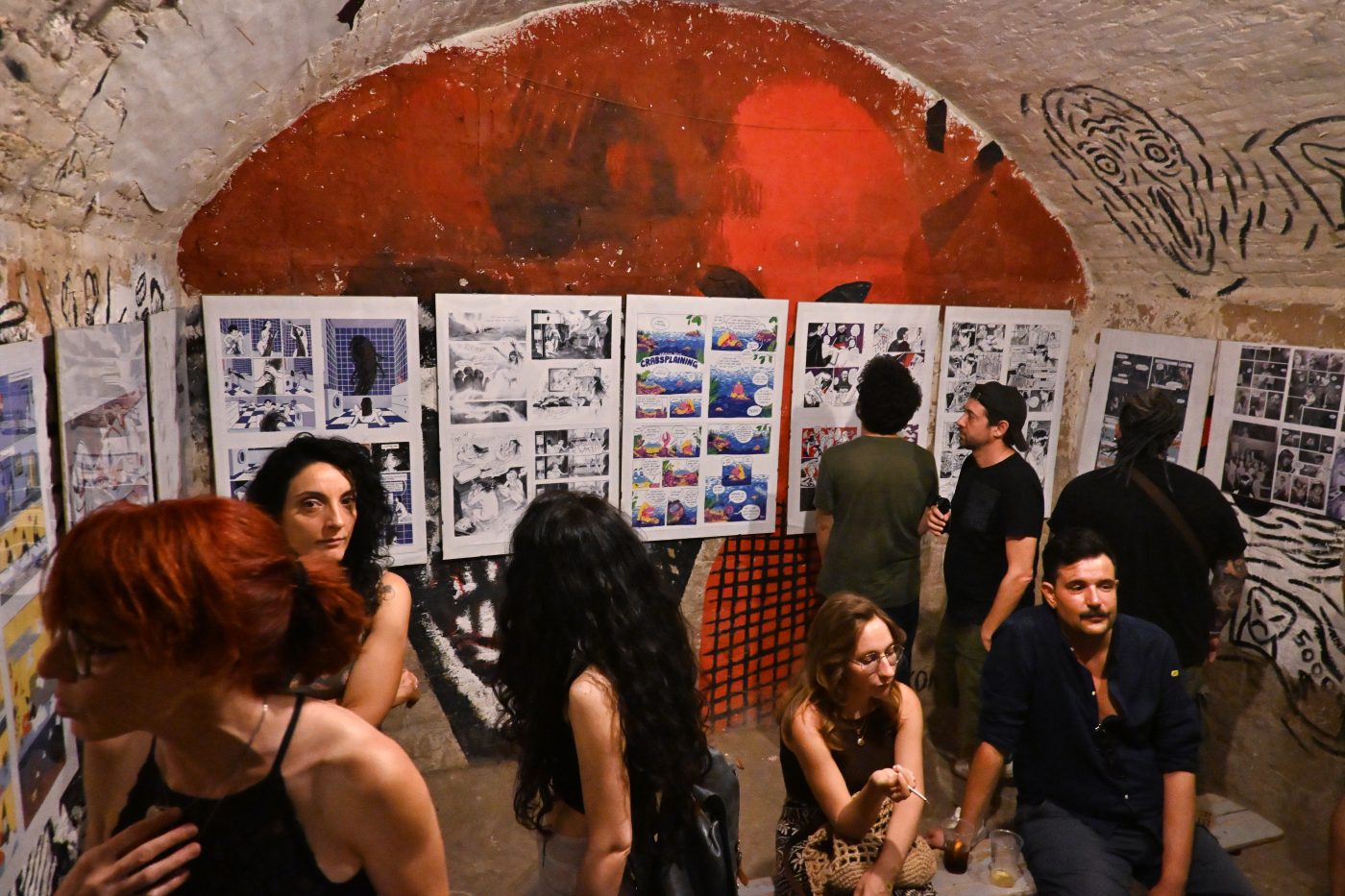
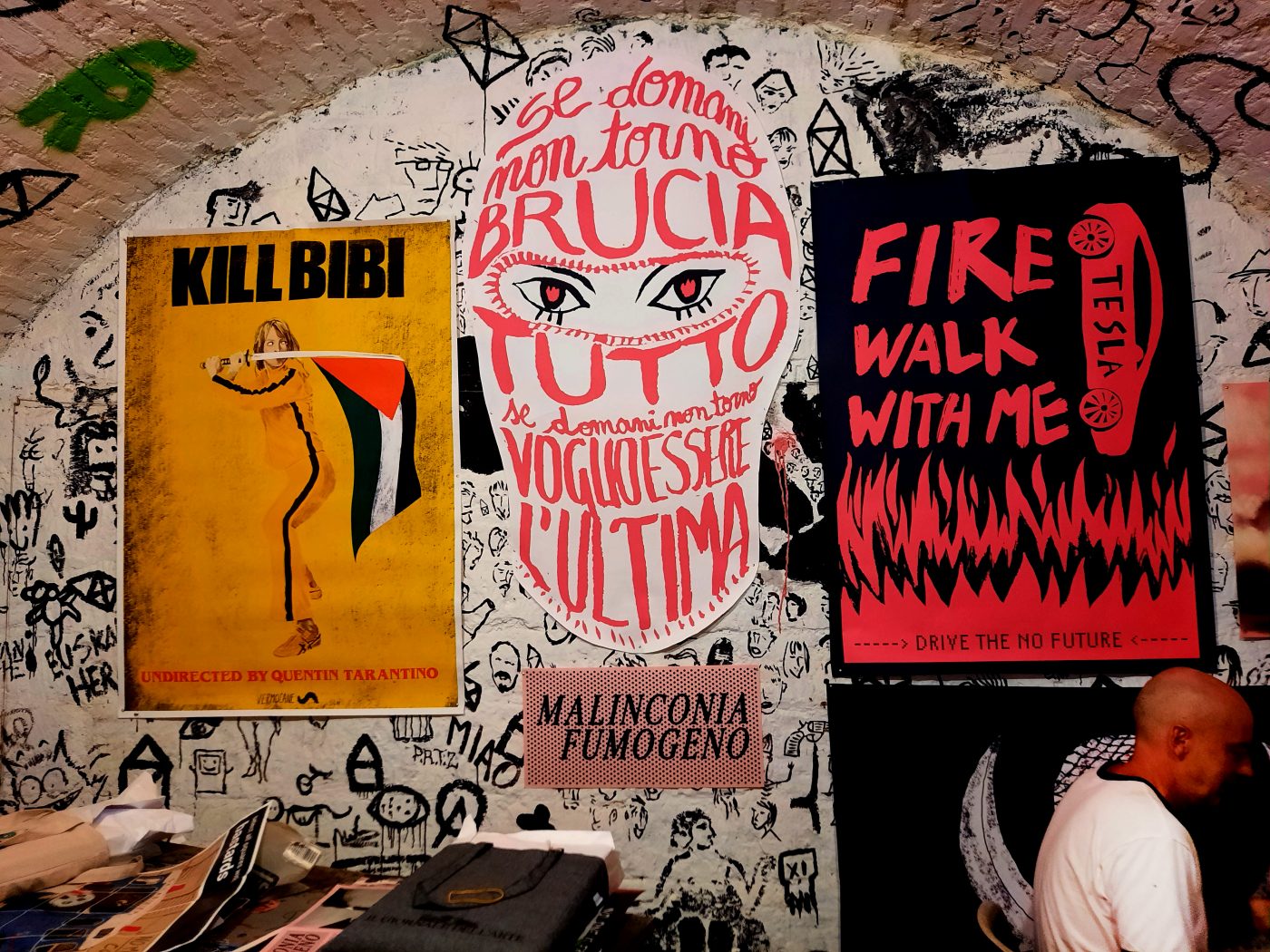
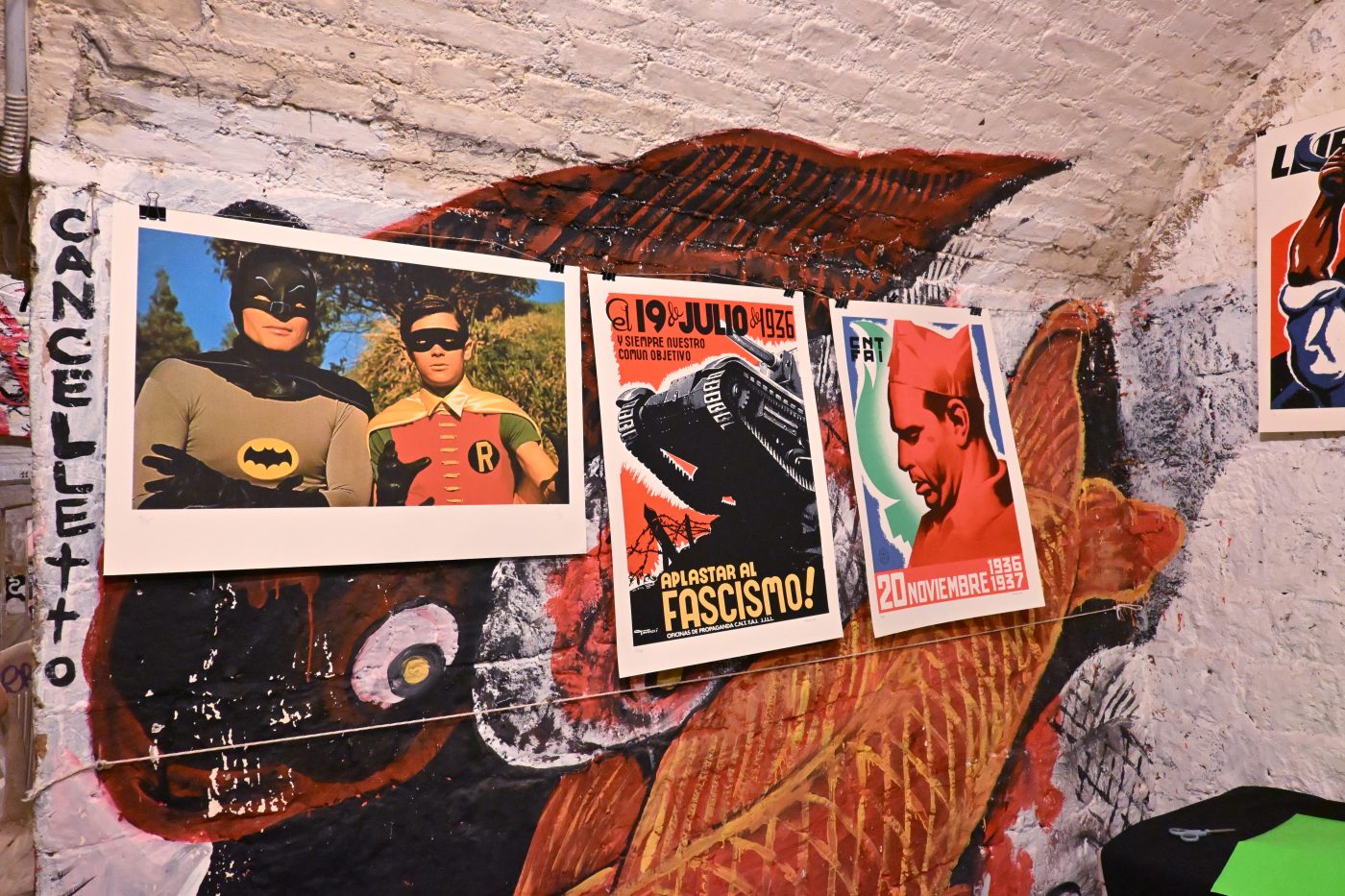
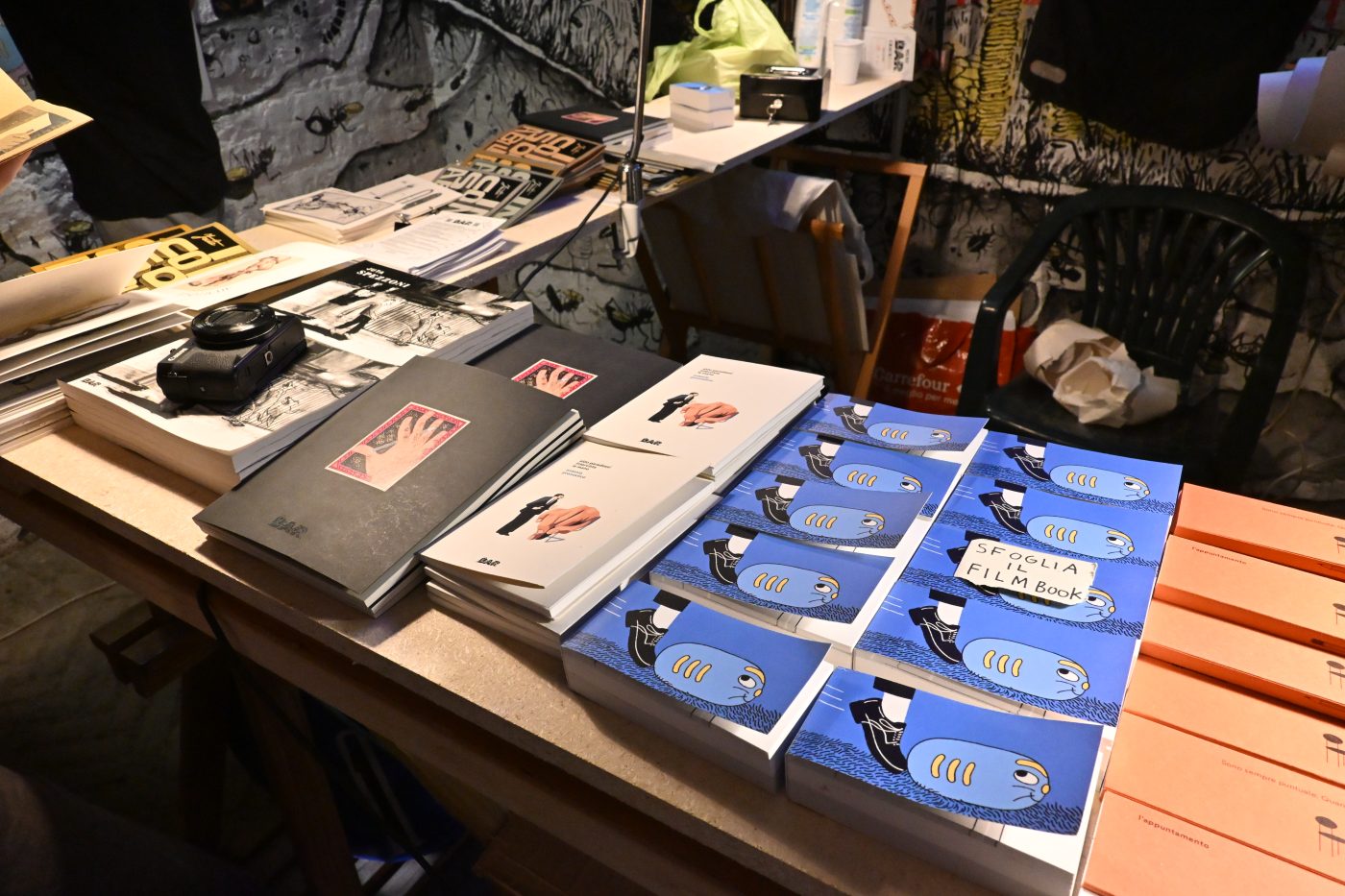
Izabeau Legendre has also attended many festivals before, but this was his first time at CRACK!
“I’ve wanted to go for years. As a seasoned visitor to zine and small press fairs of both Europe and North America, it feels like I heard about it from everyone I ever met from both sides of the Atlantic involved in alternative, independent, experimental and radical comics. The festival attracts the most interesting politically minded comic artists and illustrators in the world. CRACK! can only be described as both heaven and hell. Hundreds of artists coming from around the world to table underground, far, far away from sunlight and fresh air, in literal prison cells, four nights in a row; and yet, they still have to turn people away because this massive fort can’t host them all. That’s how good it is. CRACK! is equal part artistic and political utopia. Staunchly anarchist, dedicated to horizontal, Do It Yourself organizing, its organizers expect commitment and active involvement from its participants. On the last day, the festival ends with a proper (if at times chaotic) assembly in the middle of the night, where decisions are made regarding how to prepare next year’s edition (before the very last party gets going). I don’t quite remember what I thought CRACK! would be like before going, but whatever it was, I now know the real thing is better.”

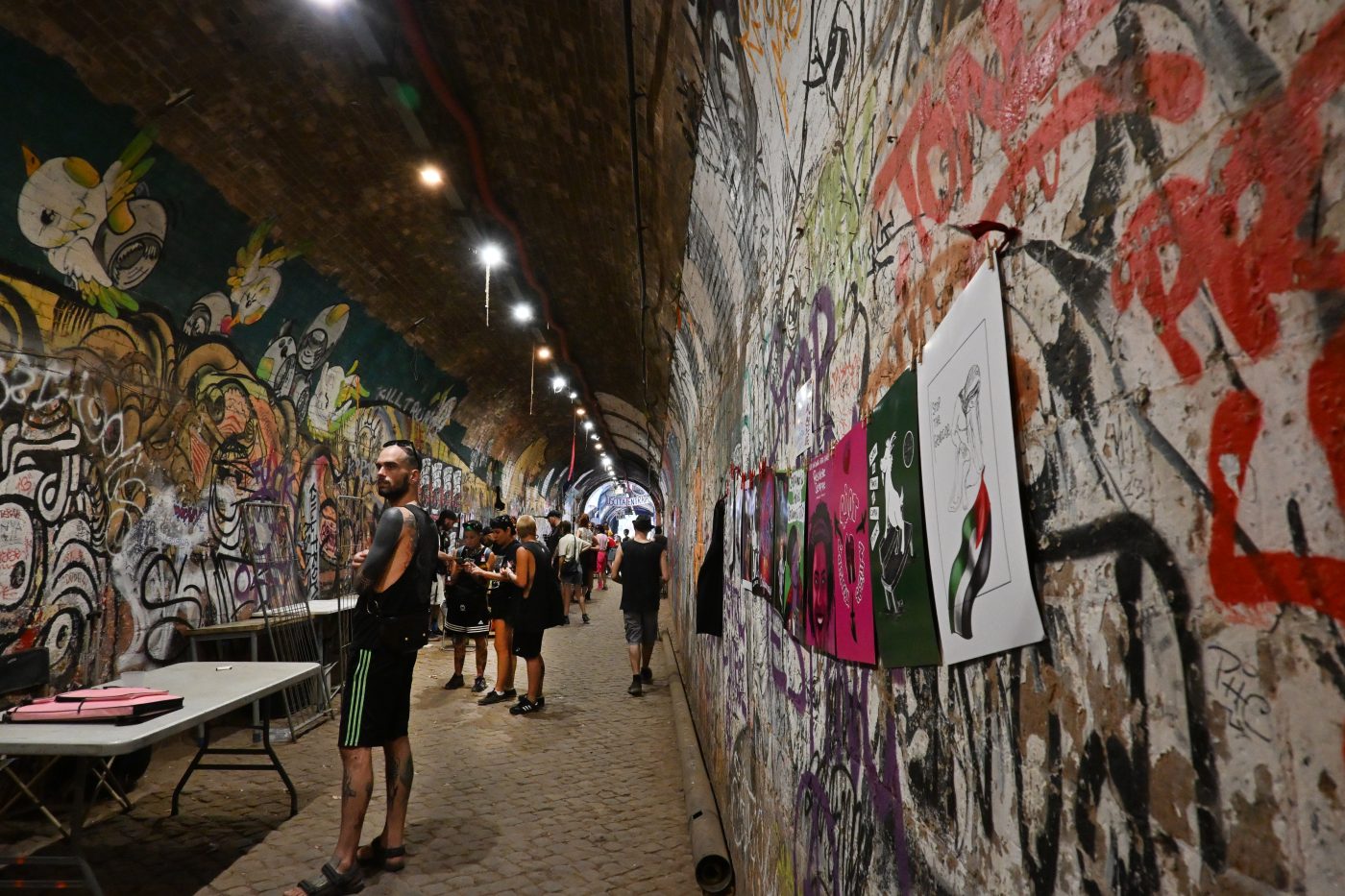
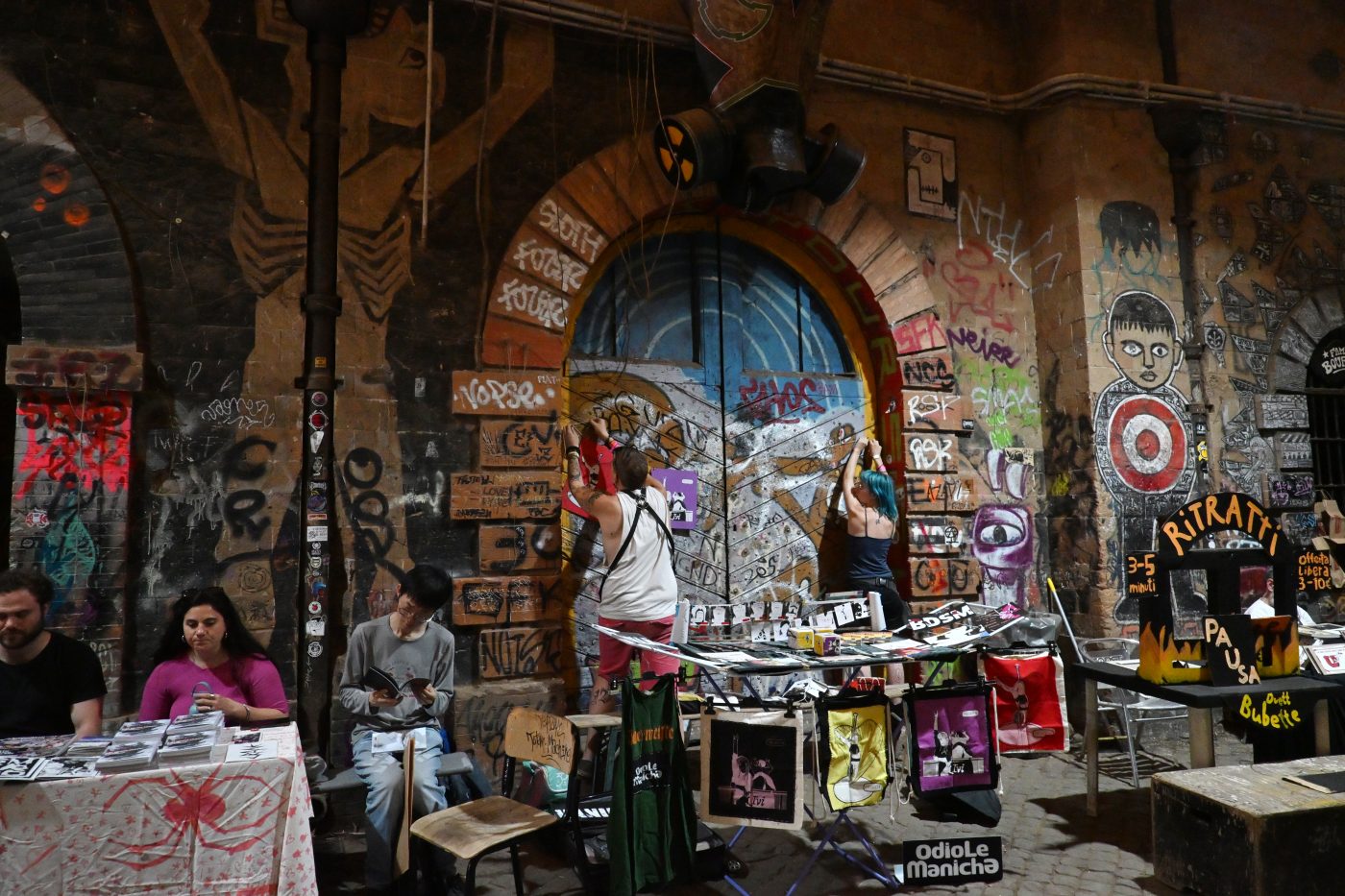
Niko Groleau from Brussels is involved in many events associated with the Belgian zine culture and chimed in:
I do not just attend the festival, I also go because of the Forte. CRACK! made me discover this site and it is the Forte that makes me come back. The mindset here, the activities, its yearly life beyond the festival is a concrete and functioning model of a group that self-manages this site since 1986. On a human scale, this place and its spaces are filled to the rim with life and ideas close to my heart. All this is very inspiring and helps me fight the solitude that I feel when trying to do the same in Brussels and coming up short. I visit CRACK! almost every year, just to bathe in the atmosphere and fill myself with the ideas, the people’s energies and the beautiful madness that I bring back with me and live on for the rest of the year. On the artistic and graphic level, I discover books, posters and other knickknacks from around the world. Only here can I see them all gathered, a few feet apart from one another. The power of CRACK! is that here, the graphic arts converge with political ideals. Into the night, I shared long discussions, lots of laughs, traded zines and shared drinks with all these beautiful human beings. Using my bare bones English (that being the case with almost everybody else there), that universality allows me to go to the heart of things, to what is essential. Attending a festival without connecting with the people is useless, and an art festival that calls itself “underground” in an institutional location will always have its possibilities limited. The CRACK! Festival creates a powerful union between the arts and underground culture that is without equals.”
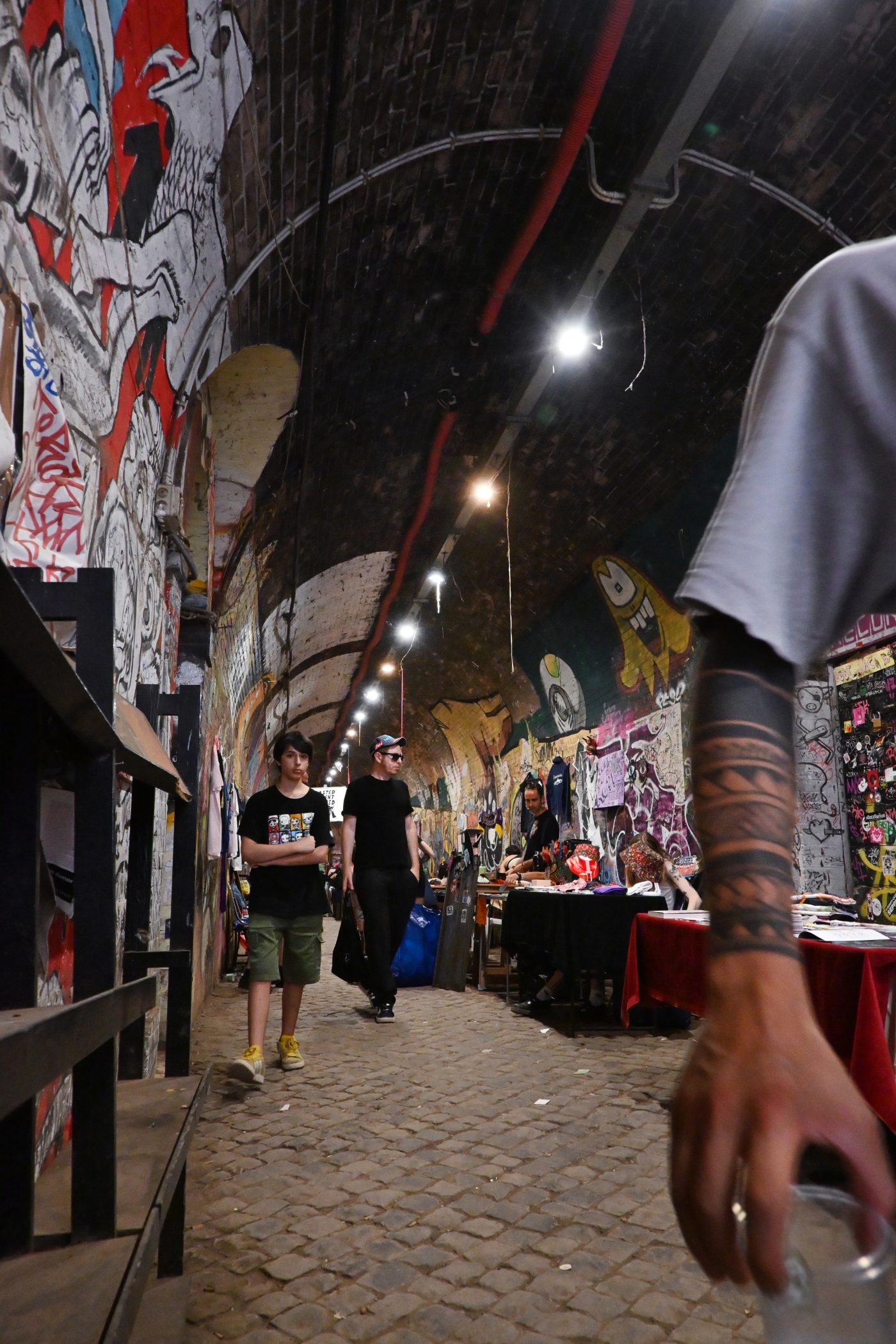
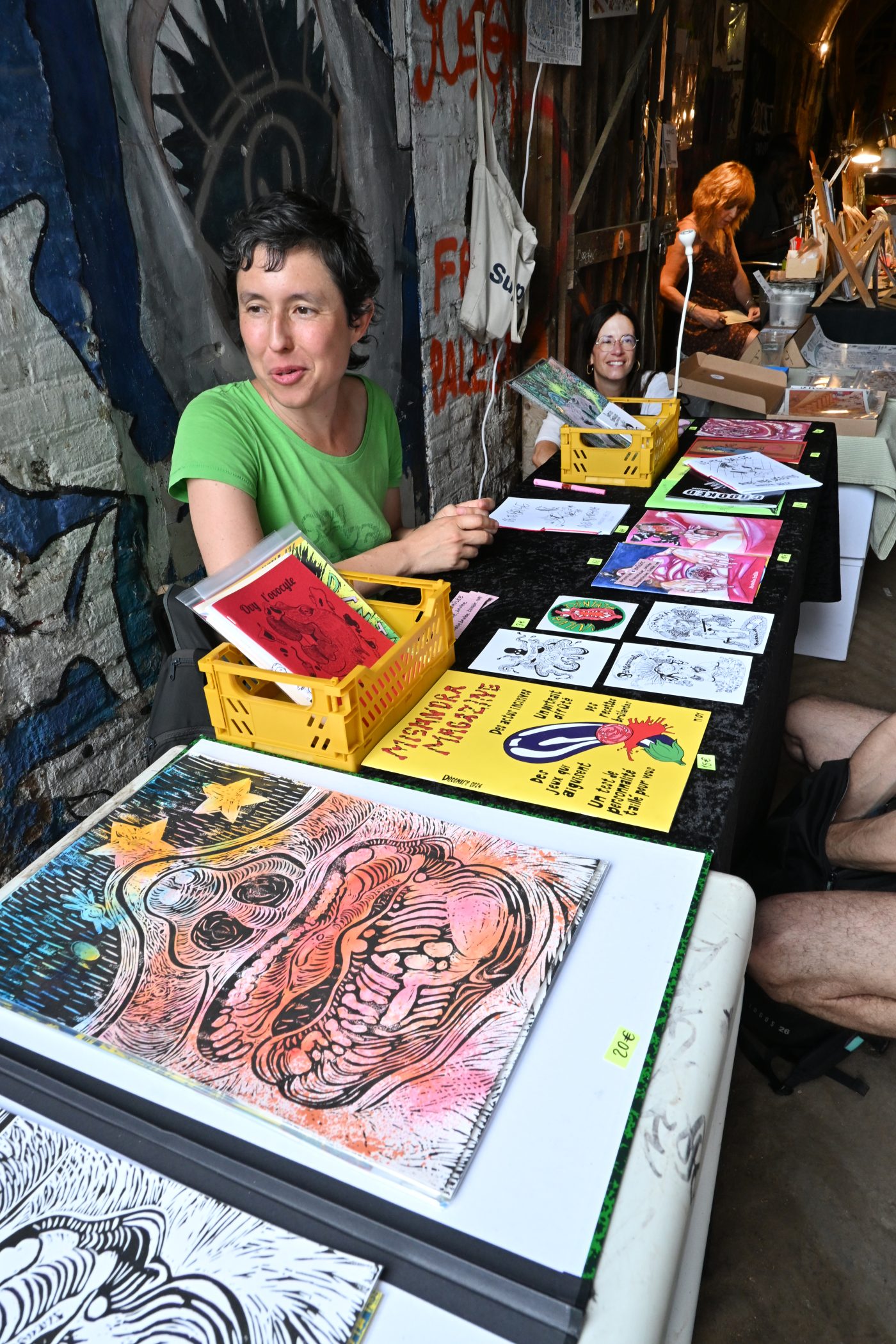
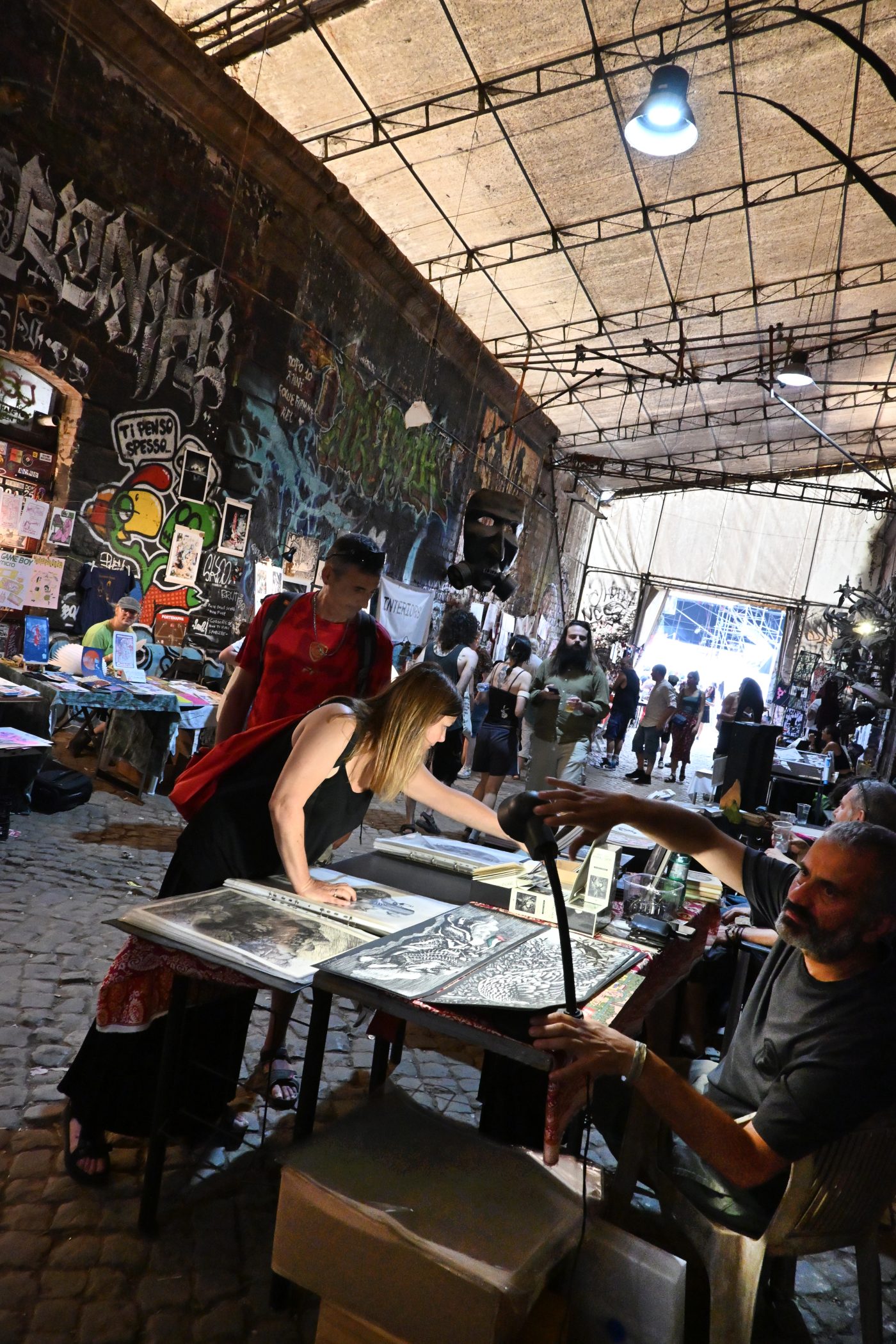
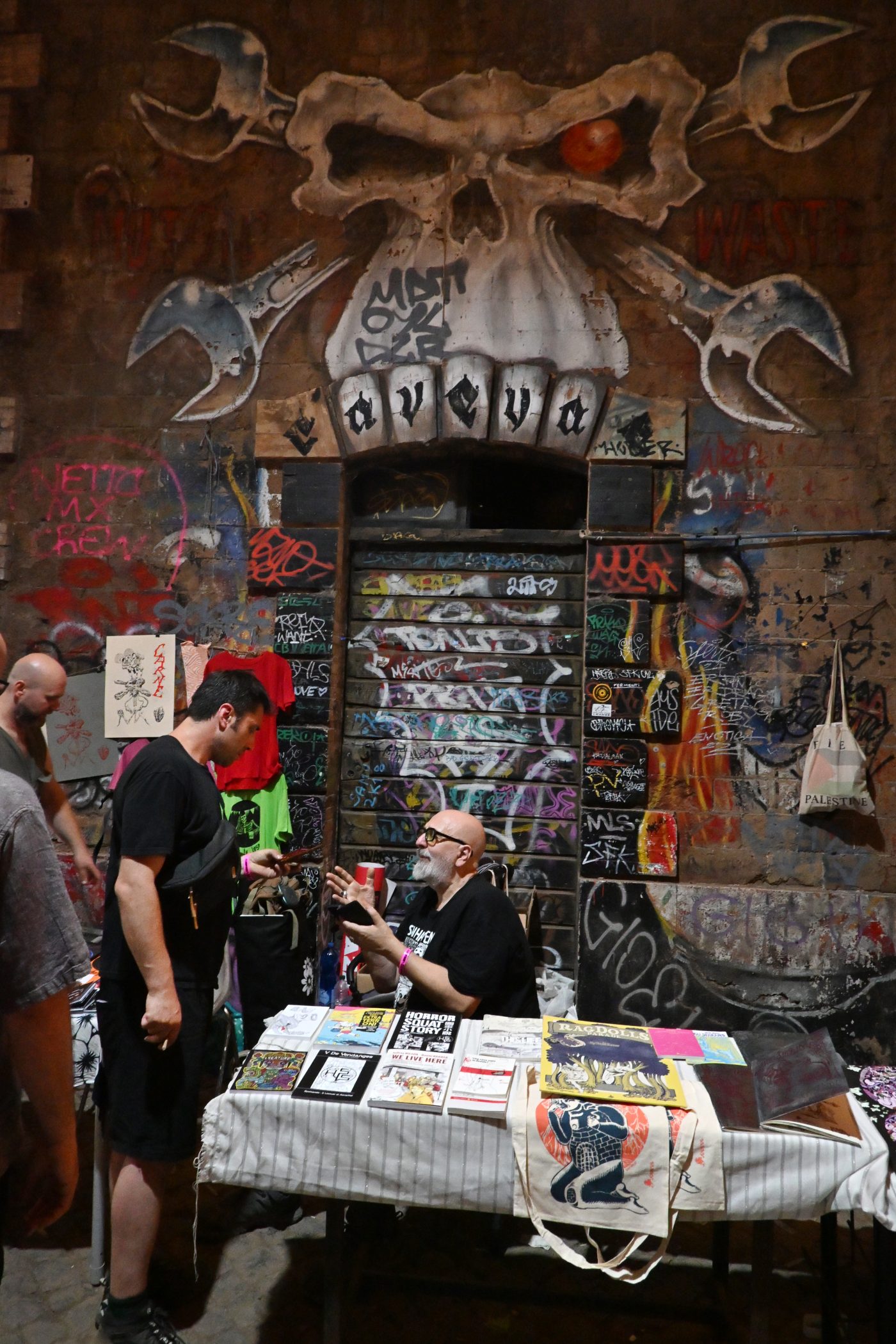
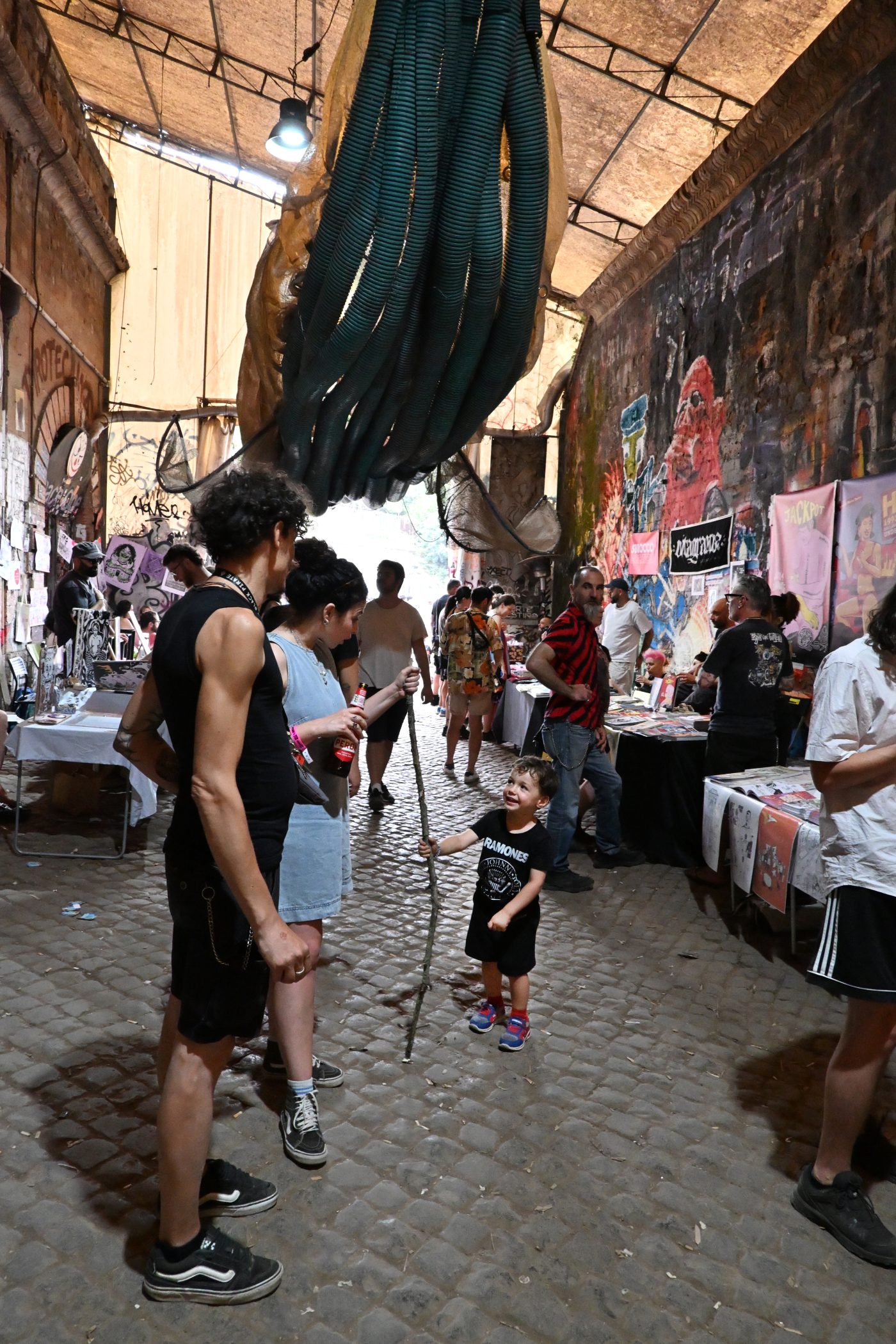
Calotta Vacchelli, is an Italian comics journalist and historian based in Rome who has worked with Bindi to help organize CRACK!, contributed her insider’s perspective fighting the good fight.
“Crack! Fumetti Dirompenti is the measure of the international underground in the Western world. Listen: there is no other thing like CRACK! No such variety, no such diversity, no such experimentation. No other place with this amount of color, aesthetic difference, experience. If it’s true that comics festivals are the raves of comics, Crack! is our free party.
It’s the only place where you’ll find the most important graphic novelists of the European scene, international researchers, regular publishers and the most experimental comics. Outside CRACK! you can be whatever you are. Inside CRACK!, your real self will come out — expressing yourself through comics and friendship.
We’re together there because we like exchanging visions of imagery. We like taking time off productivity and using it like that. Nobody can stop us.
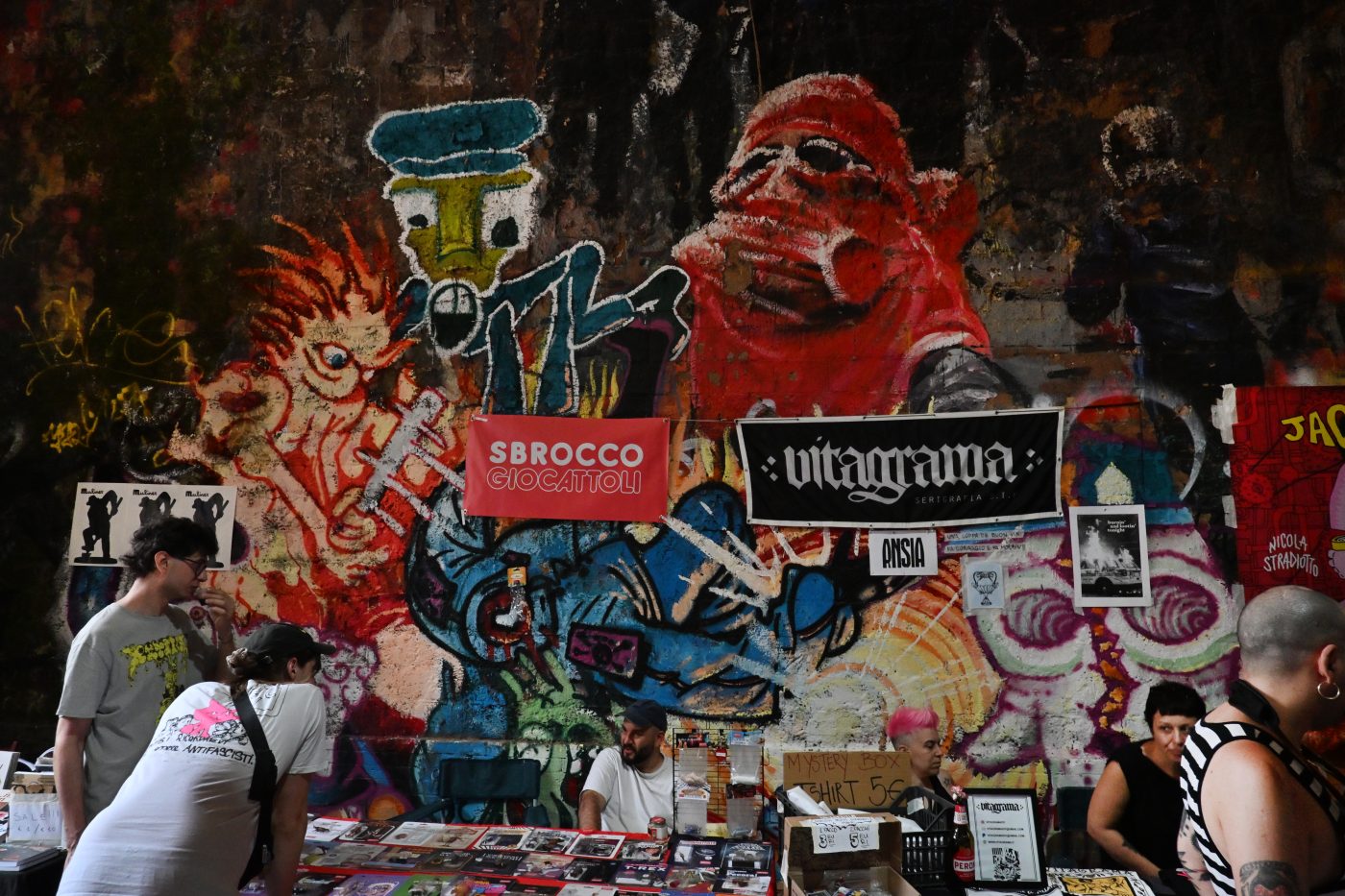
Each year it grows— more authors, more performances, more music shows. Selections include instrumental solos, electronic music, tekno, trap, drag queens. Every possible form of drawing, line, composition, print technique, color combination, book format, poster format, card format — all explored.
It’s the most attended underground comics festival because people there really have something to say. If you self-publish your stories, drawings, illustrations, prints, and you really want to say something — say it at CRACK!. We need you here in Italy, where fascists are in charge of the government, to help grow — and explode — our intellectual and artistic scene. Fascists will not stop us from drawing what must be drawn, from expressing what we believe in. Conformism will not stop us if we keep creating spaces where dissent can speak through art.
We need you to bring this outside of Italy — into your own countries, your own cities. To create a network where the fire of the underground keeps burning. When one festival ends, we go to the next. We keep exercising our own utopia — against oppression, against censorship, against fear.
We need chronotopes where our slap in the face of fascism doesn’t fade. We need places where ideas are welcomed, where we reclaim our time, where we are not just small chips in the domino of power. We go against power at CRACK! where the transversality and horizontality of everything — genre, origin, authorship — doesn’t matter. Only graphic narratives that have something to say matter.”
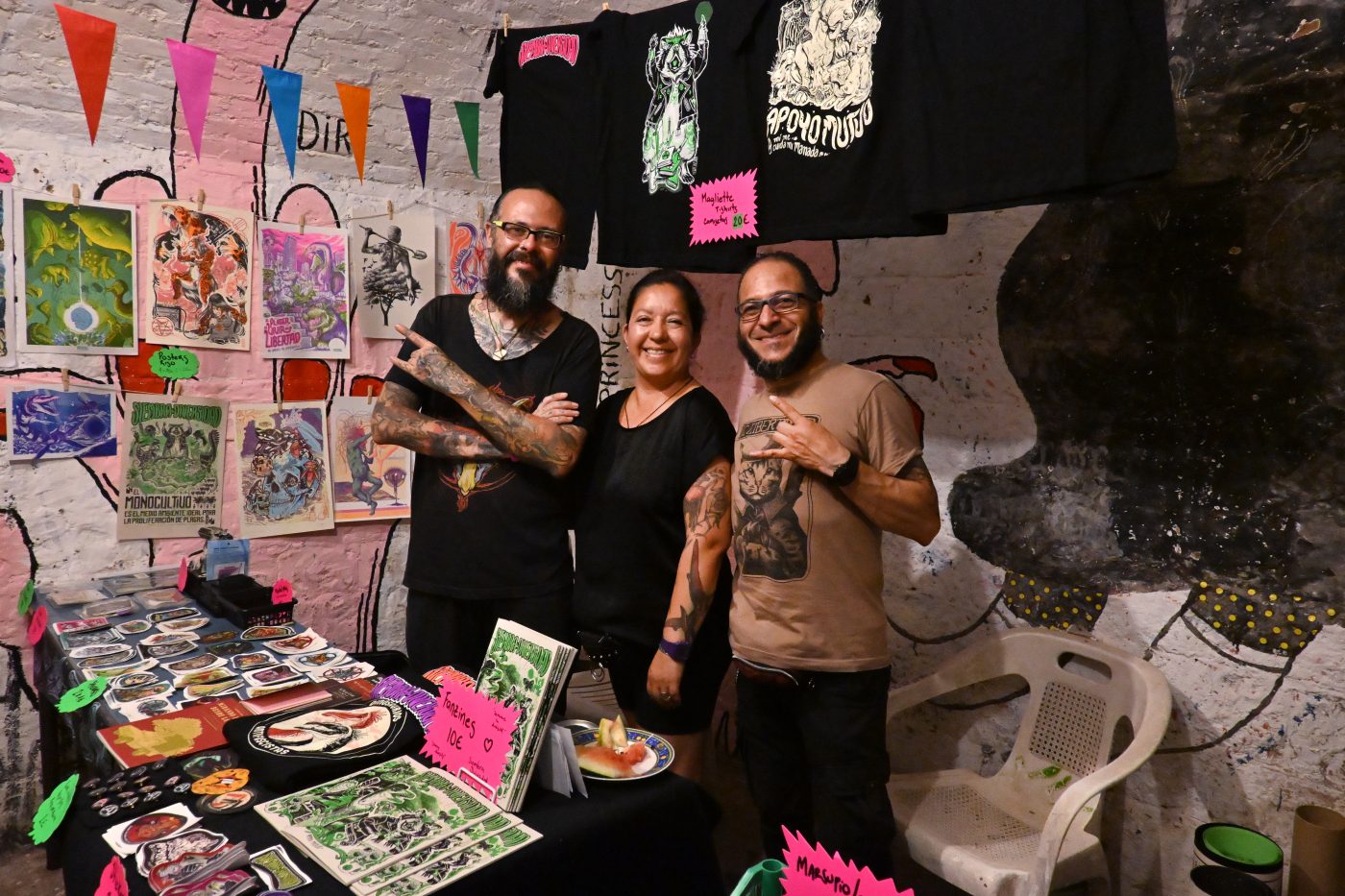
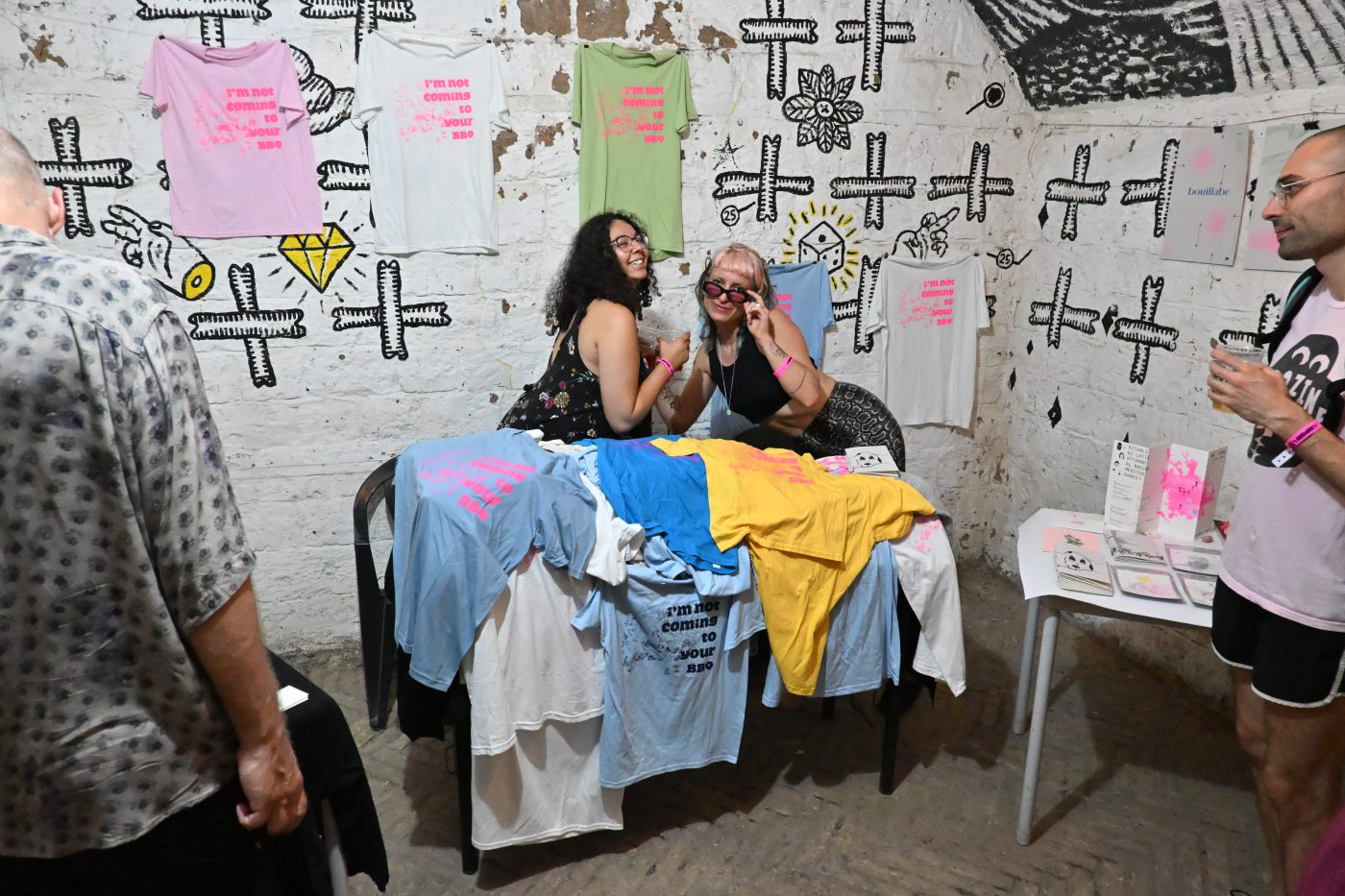

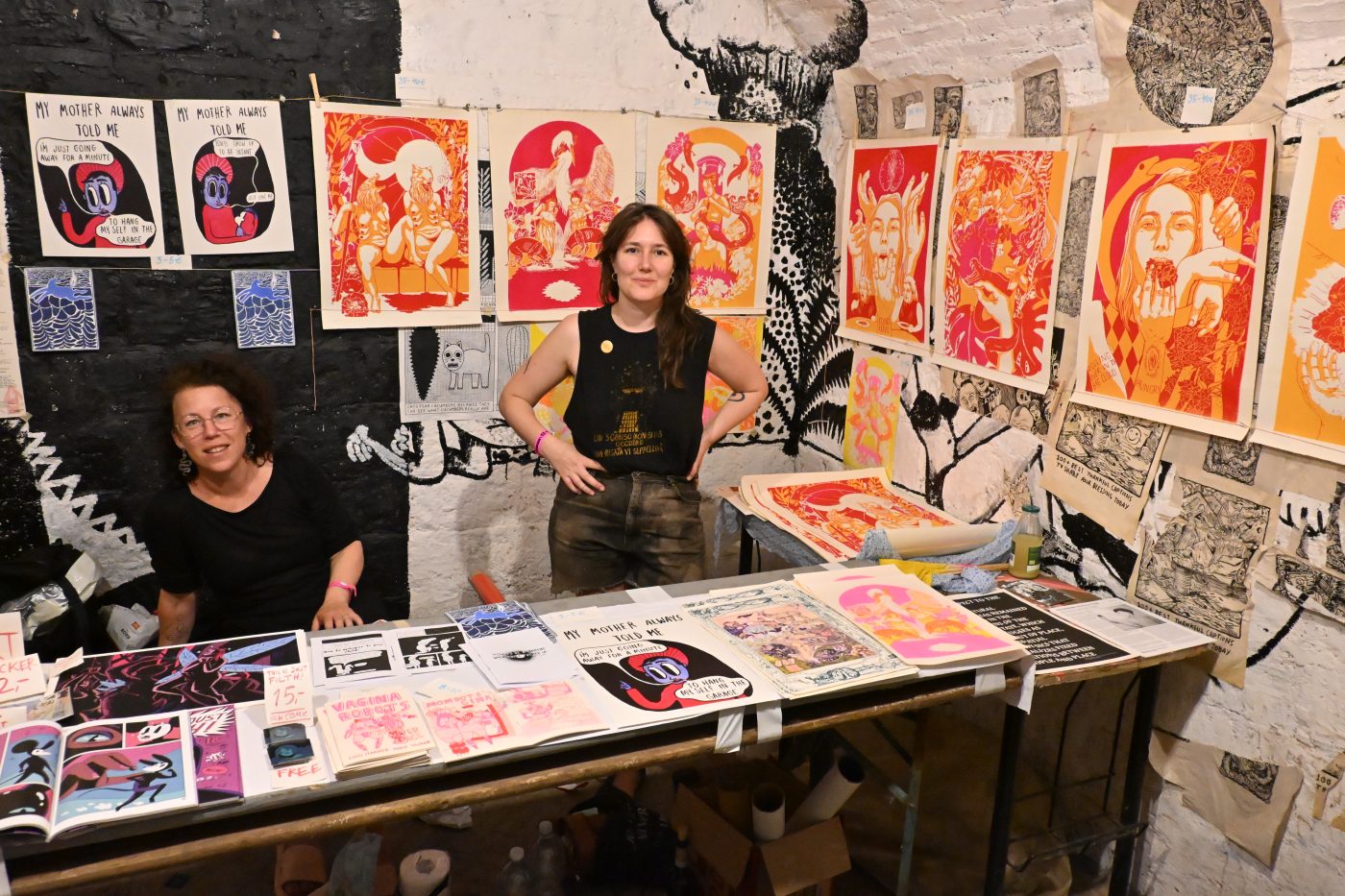
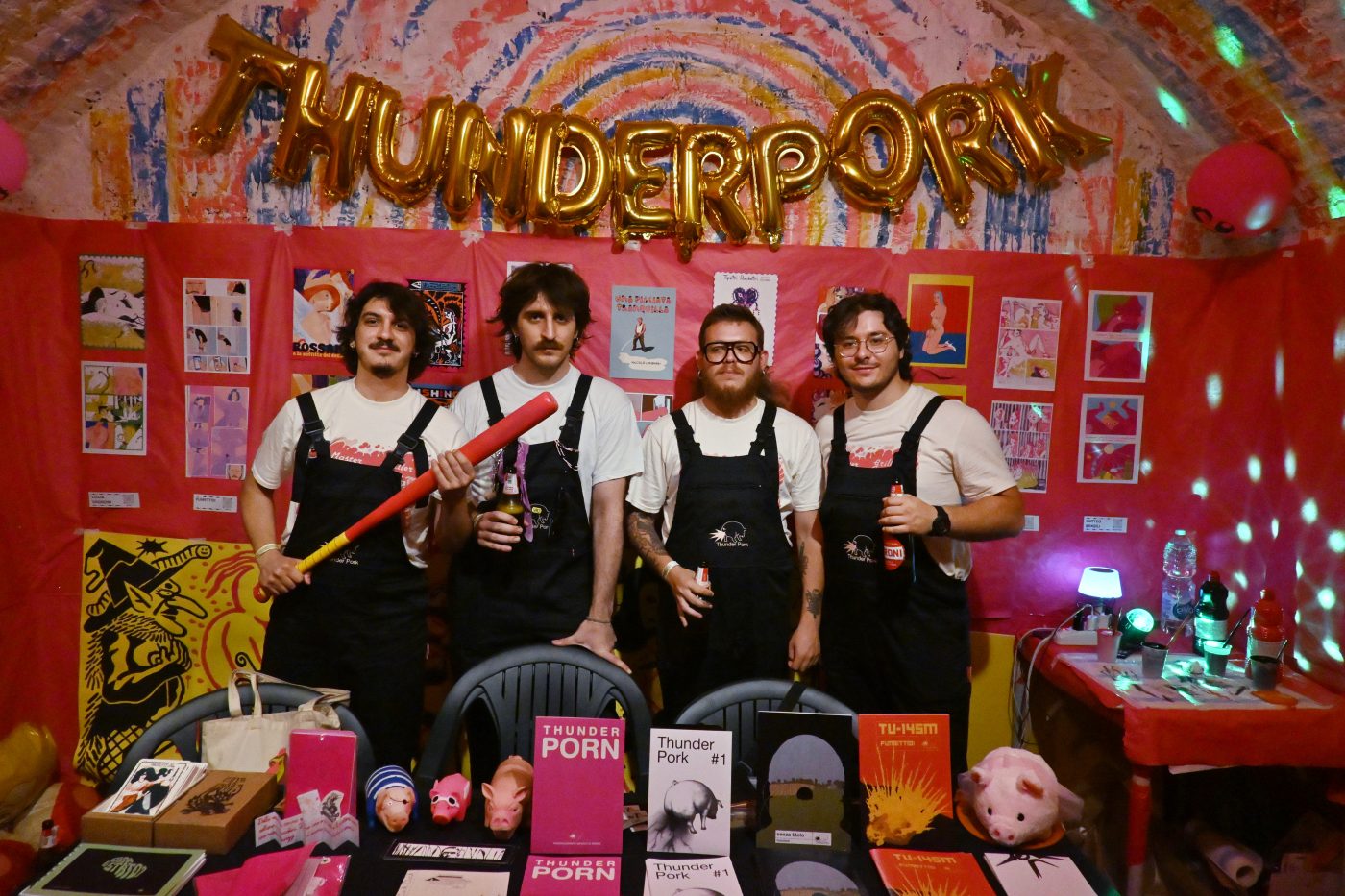
A true Renaissance man, Valerio Bindi answered a few of my questions about CRACK!
MARC TESSIER: Valerio, were you at CRACK! from the very beginning? Were there others who helped out?
VALERIO BINDI: I've been organizing festivals at the Forte since 1991. I love that. And yes, this project was started by me, with the help of the Infoshop of the Forte and the TeaRoom. Everyone who occupies the Forte has helped, the greatest was the silkscreen collective L'Østile, they have organized workshops for the artists since the beginning; letting them print their artworks at the Forte. Another important partner has been the ROR (Radio Onda Rossa), who has always supported the event since the beginning.
Whose idea was it to start this festival?
The idea was by me and the people running the Forte Infoshop. We created a mailing list and a forum to support the creation of the festival. Before we began the first edition, we took our time to let it grow. So it was born already strong.
Did you feel there was an important need for it?
Yes, after the G8 in Genoa [in 2001], all the repression, torture and persecution here in Italy; there was a need to find a way to speak, maybe not through words but with images. The name Crack refers to Hugo Pratt onomatopoeia that indicates a shot in the desert (see Scorpions of the Desert). Before Pratt, it was the cracking sound of a tree branch.
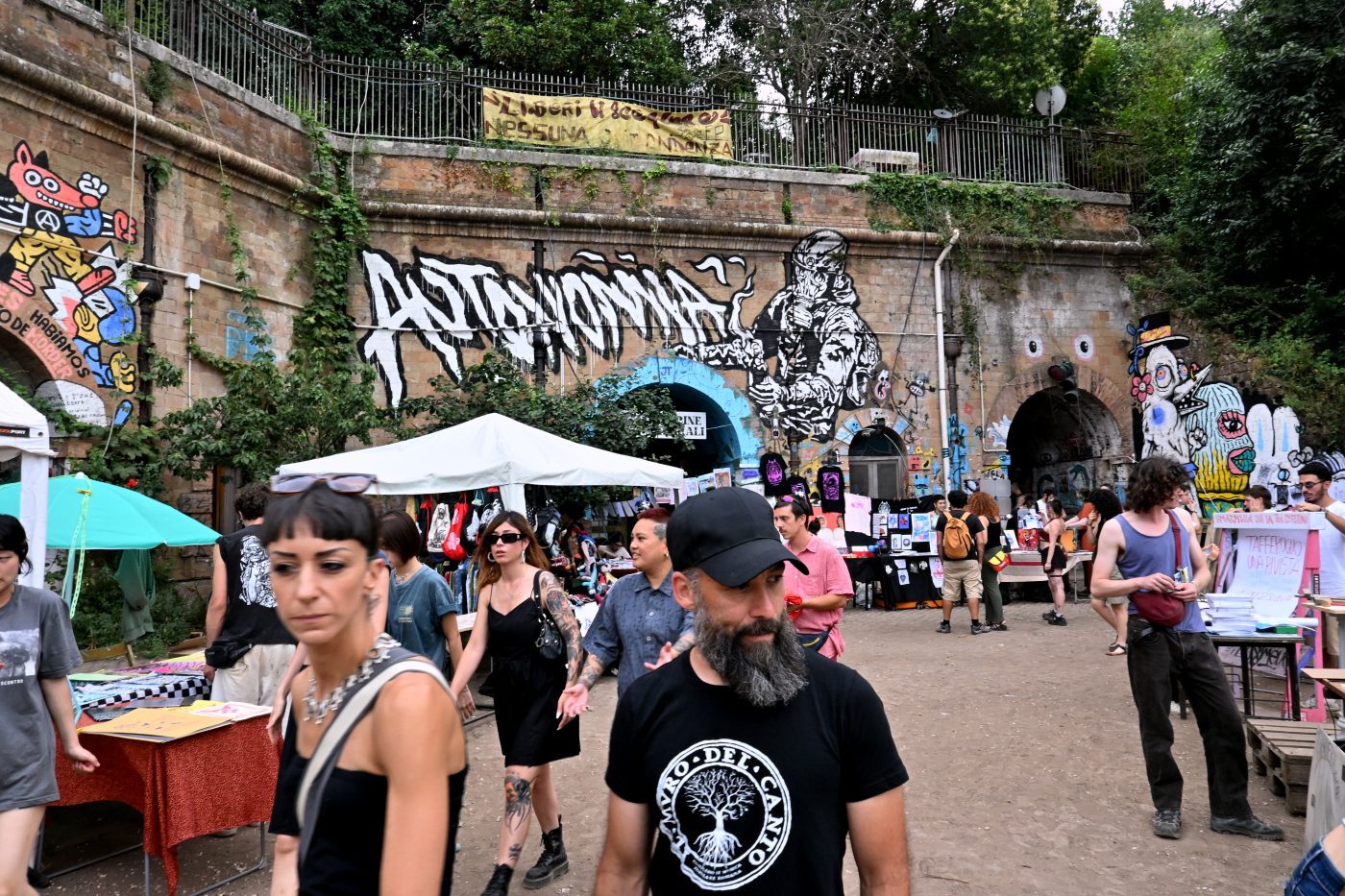
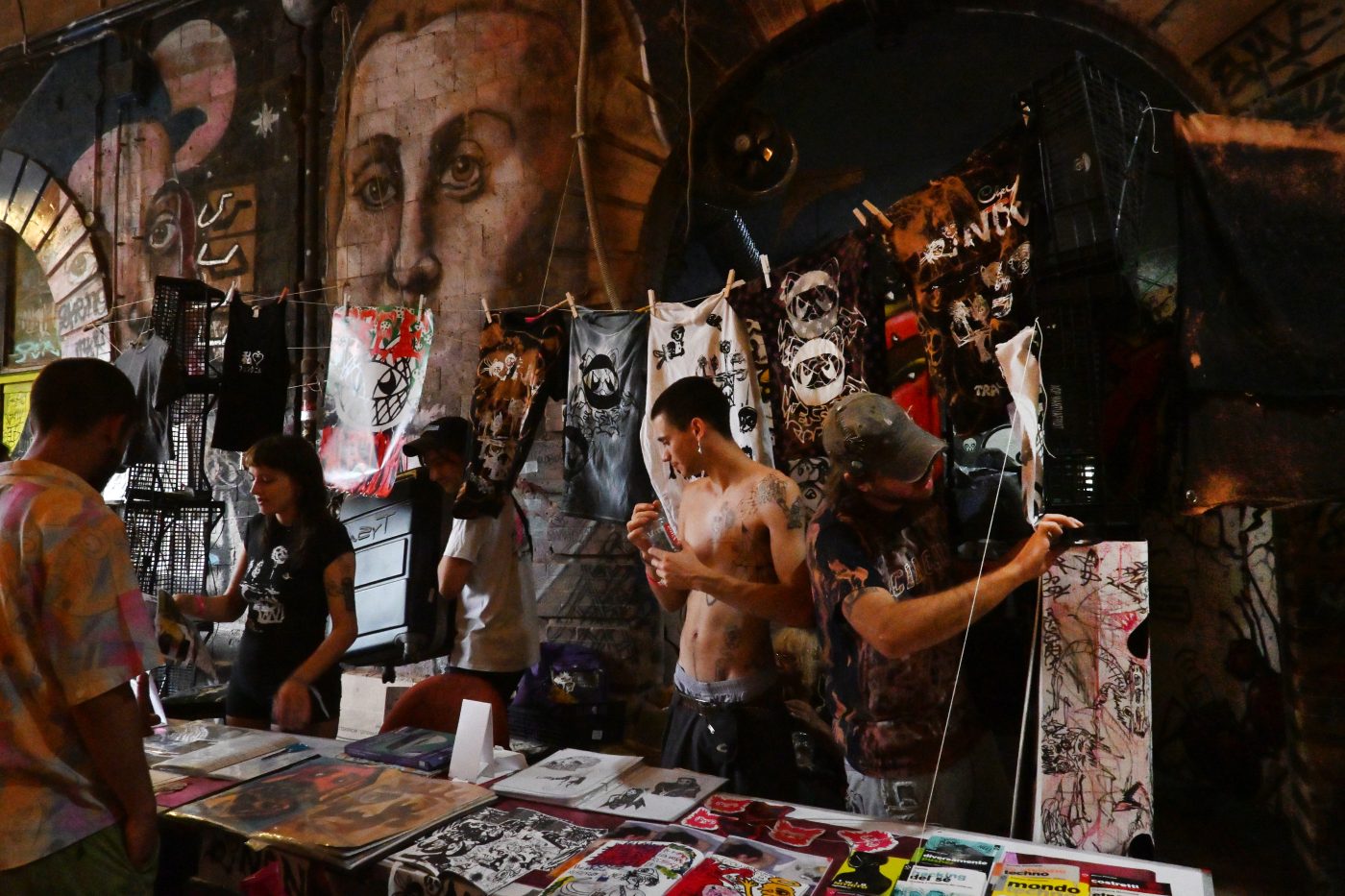
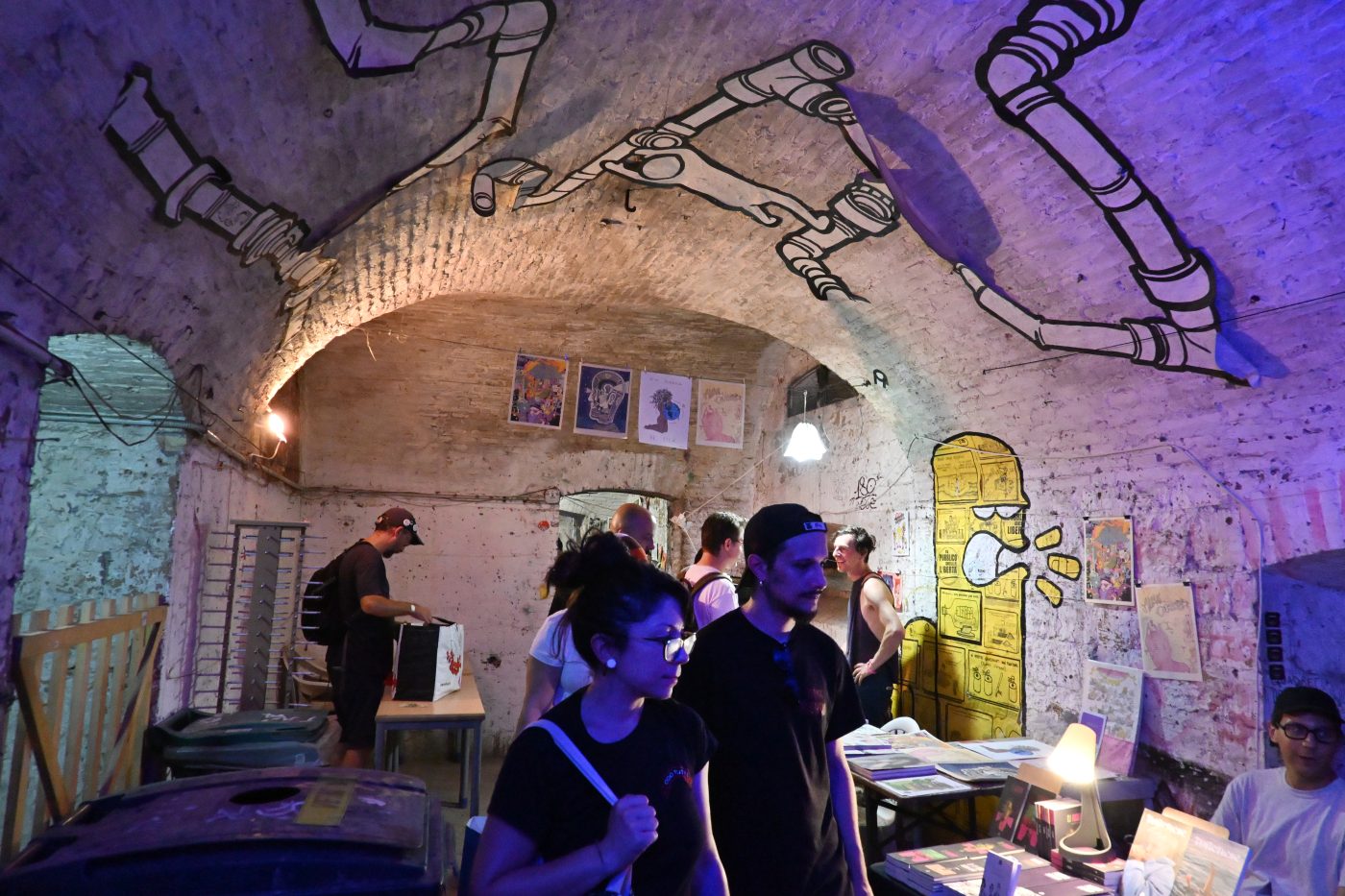
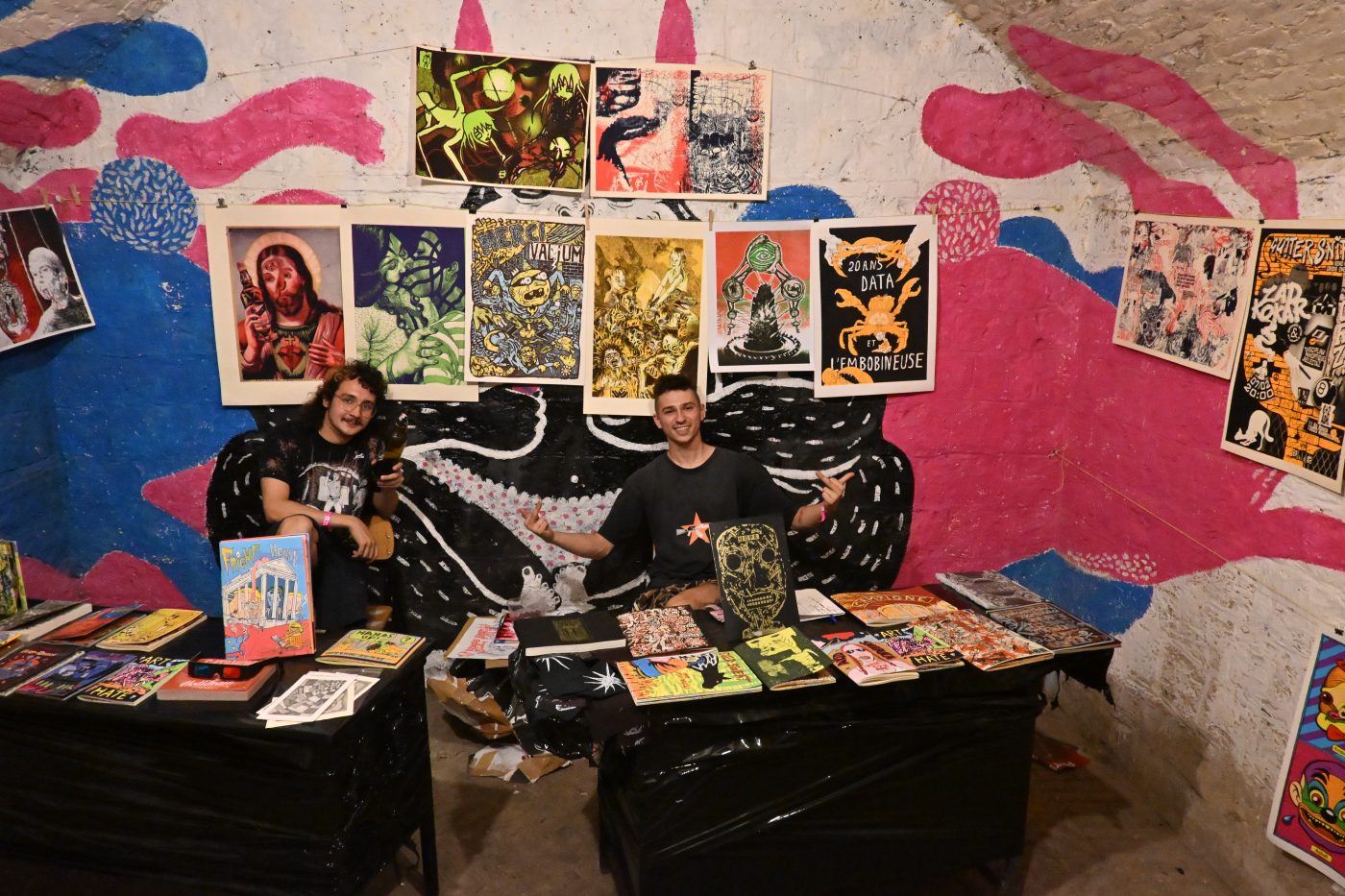
Who selects the themes?
We have a focus group composed of Bambi Kramer, Giusy Noce, Federico Primosig, Tommaso Liuto, Mara Mancuso, Silvia Vari, and lately my son Laszlo. We have many discussions about our feelings and the current affairs that lead to a theme. Then, we split the theme in three parts to be used for three different editions.
How are the artists selected?
Until 2019 we had no selection. Everyone who filled out a request would be accepted. After COVID, the applications were too numerous to handle (I remember a recent edition with around 1,000 people exhibiting) and so we made a change. There is now the request to join in a crowdfunding event (a donation is asked, often refunded after the festival is over). Now we accept more or less a maximum of 450 proposals (this year, they were 483). It is very difficult to say no to someone. We mostly decline proposals not in line with the kind of productions we celebrate. There is no artistic evaluation. The people of the Forte Prenestino CSOA are all involved. That is probably around 50 or 60 people, maybe more. Then we have a civil service during the festival involving 15 young people from all over the world. It’s all voluntary; no fundings or sponsors. Our budget comes from donations from the visitors and the artists.
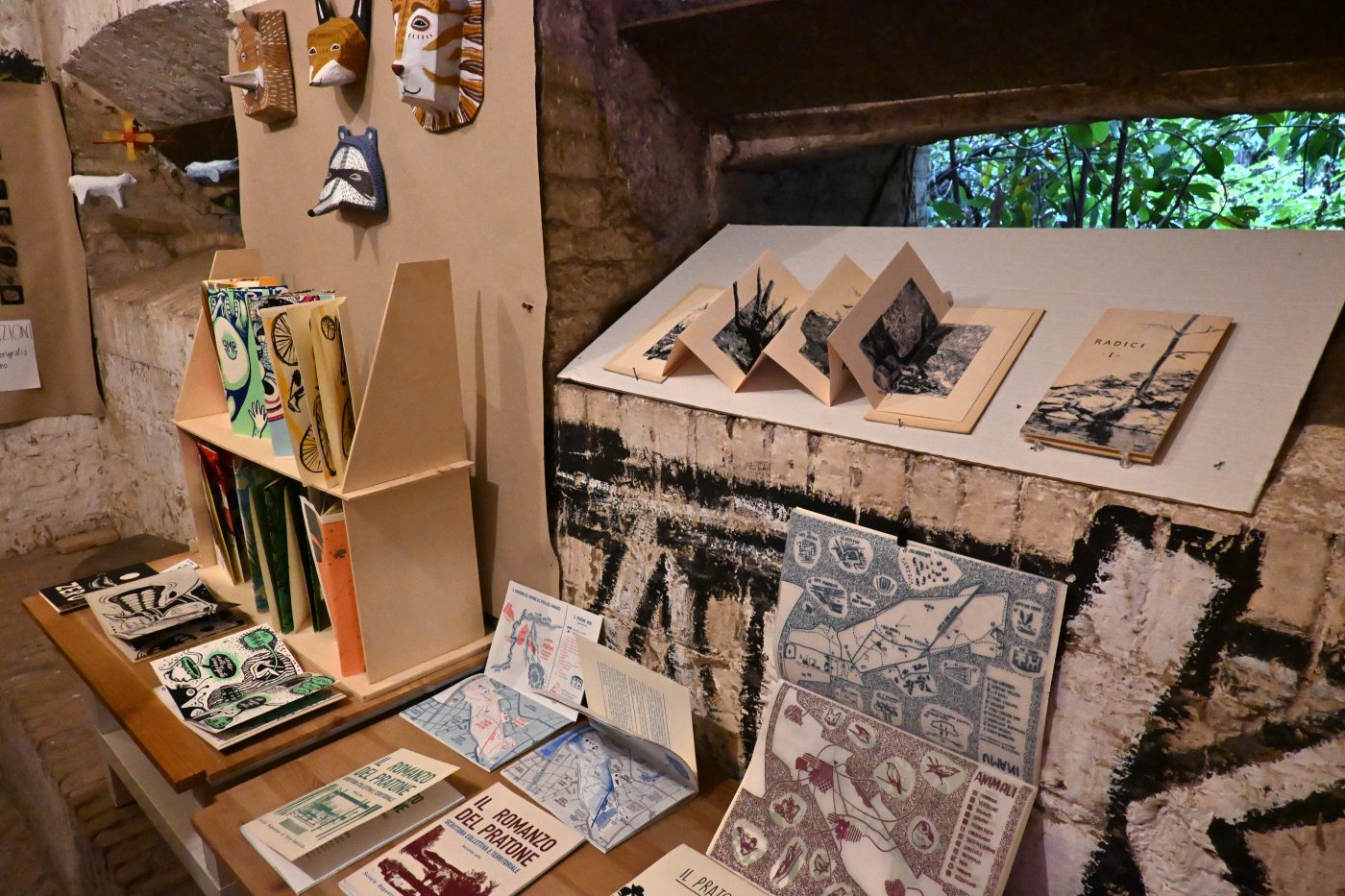
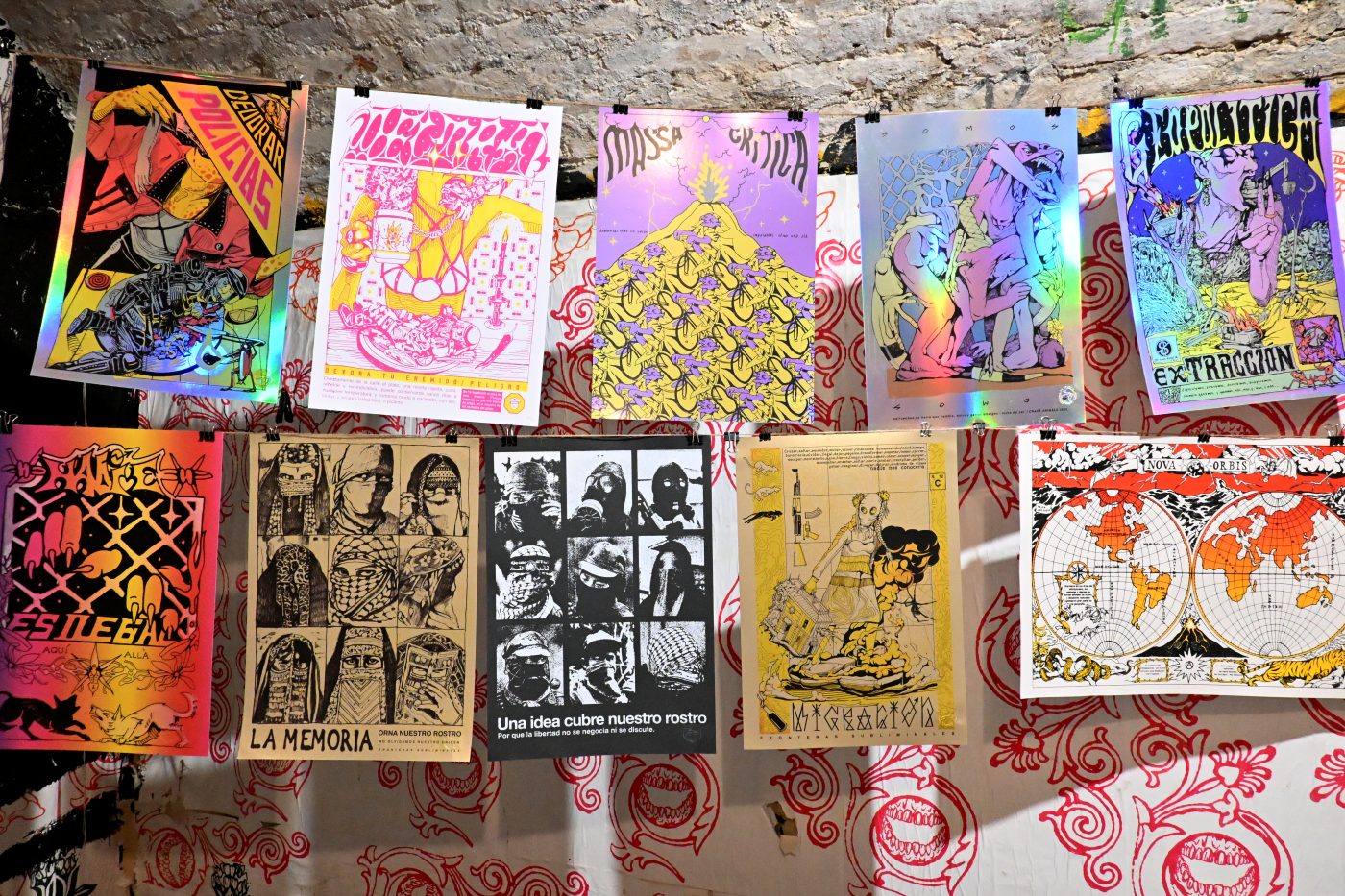
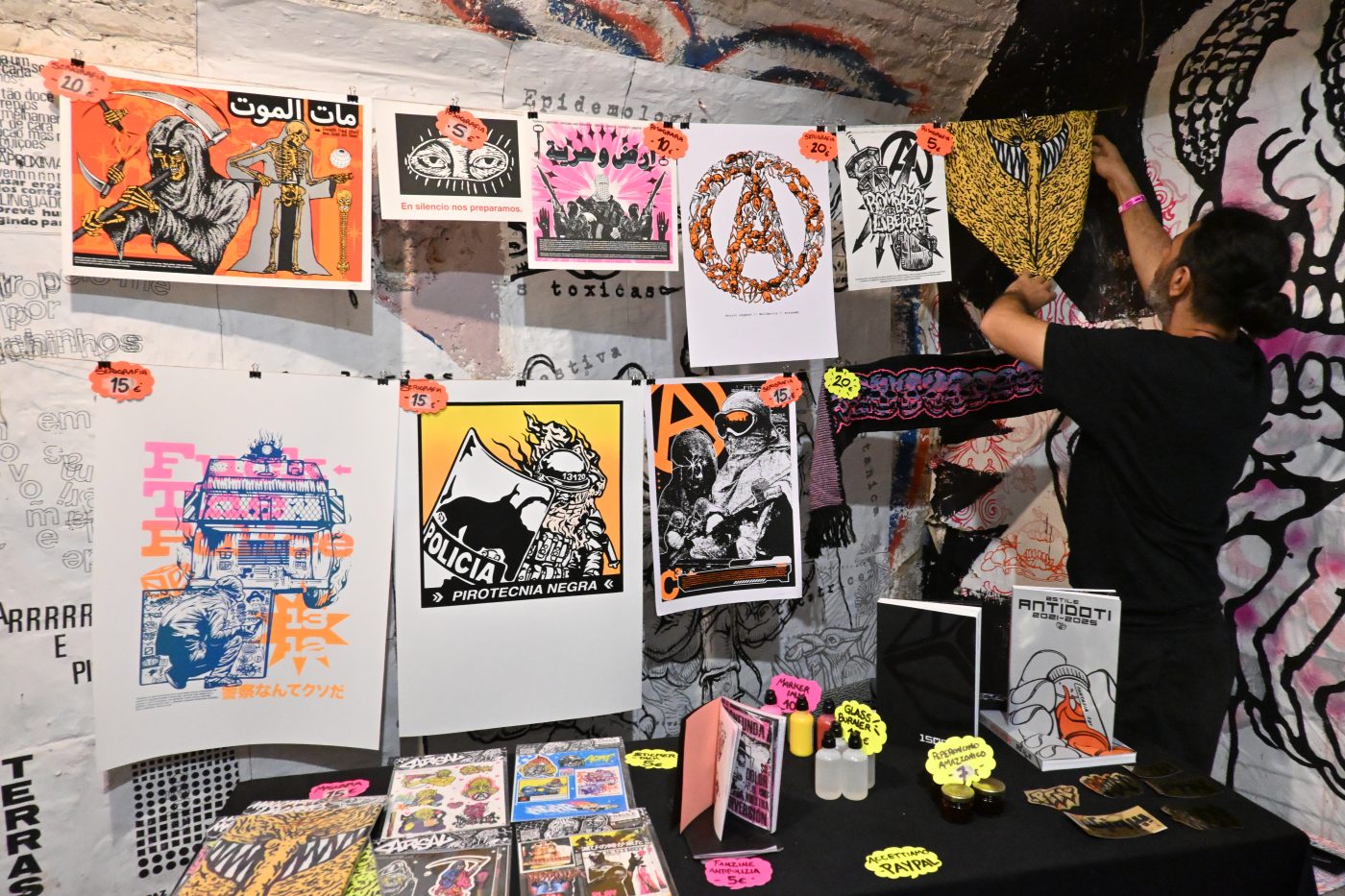
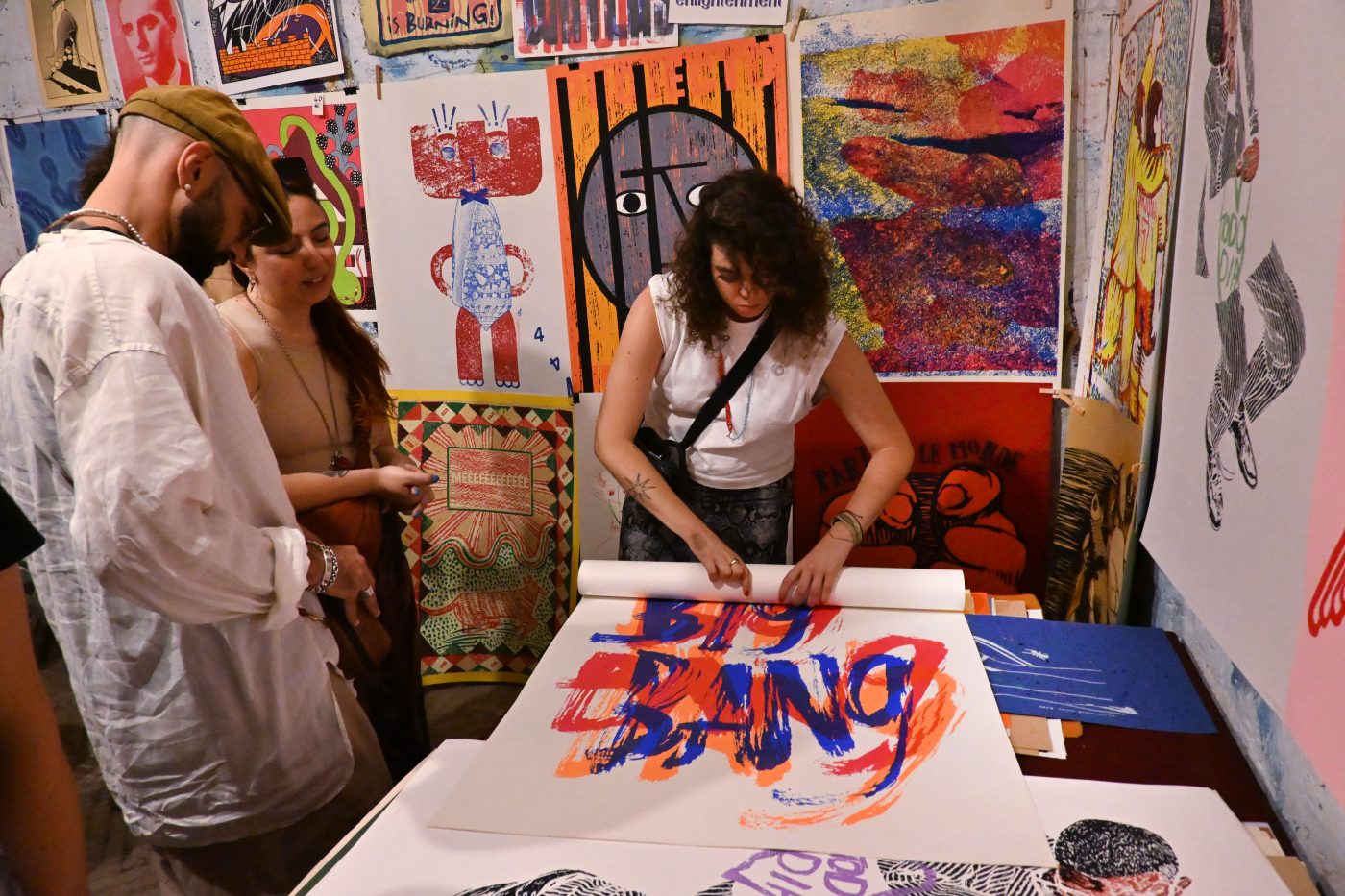
So from Thursday to Sunday night, 4 p.m. to midnight, Romans came in droves. Young and old, families with kids, families with dogs. I have never seen such a diverse crowd at an event like this. That is the ultimate mark of success, as all attend. CRACK! is no niche event, it is an open call to come and be amazed by the power and beauty of art under in its many guises.
Food for visitors is cooked and served on site. Drinks are sold at low prices that artists can readily afford. After midnight, live music is played on an outside stage. There are also live performances in the Forte during the festival. Julie Bongo performed Carne Mistica, a chilling dance bathed in red light at the Cattedrale surrounded by Valium’s art. Speaking of the Valium exhibition, I often came by during the festival to see the reaction of the visitors who discovered his art. Many smiles, catching on Valium humour and taking photos on their phones to remember the pages. A lot of interest and curiosity was sparked. On Saturday, Izabeau and I gave a well attended talk on Valium and Julie Doucet’s work, moderated by Valerio Bindi.
I am well familiar with similar events, notably EXPOZINE in Montreal and TCAF in Toronto. But the scope, the care and respect shown to the artists here is unique. Out of the thousand pictures I took during those four days, I narrowed down to a selection that I hope will communicate the joy I felt covering this festival. I leave you with part of a text Valerio Bindi wrote about self-publishing and CRACK! that truly illuminates why a lot of us, out of love, continue to fight the good fight for different kinds of comics and zines.
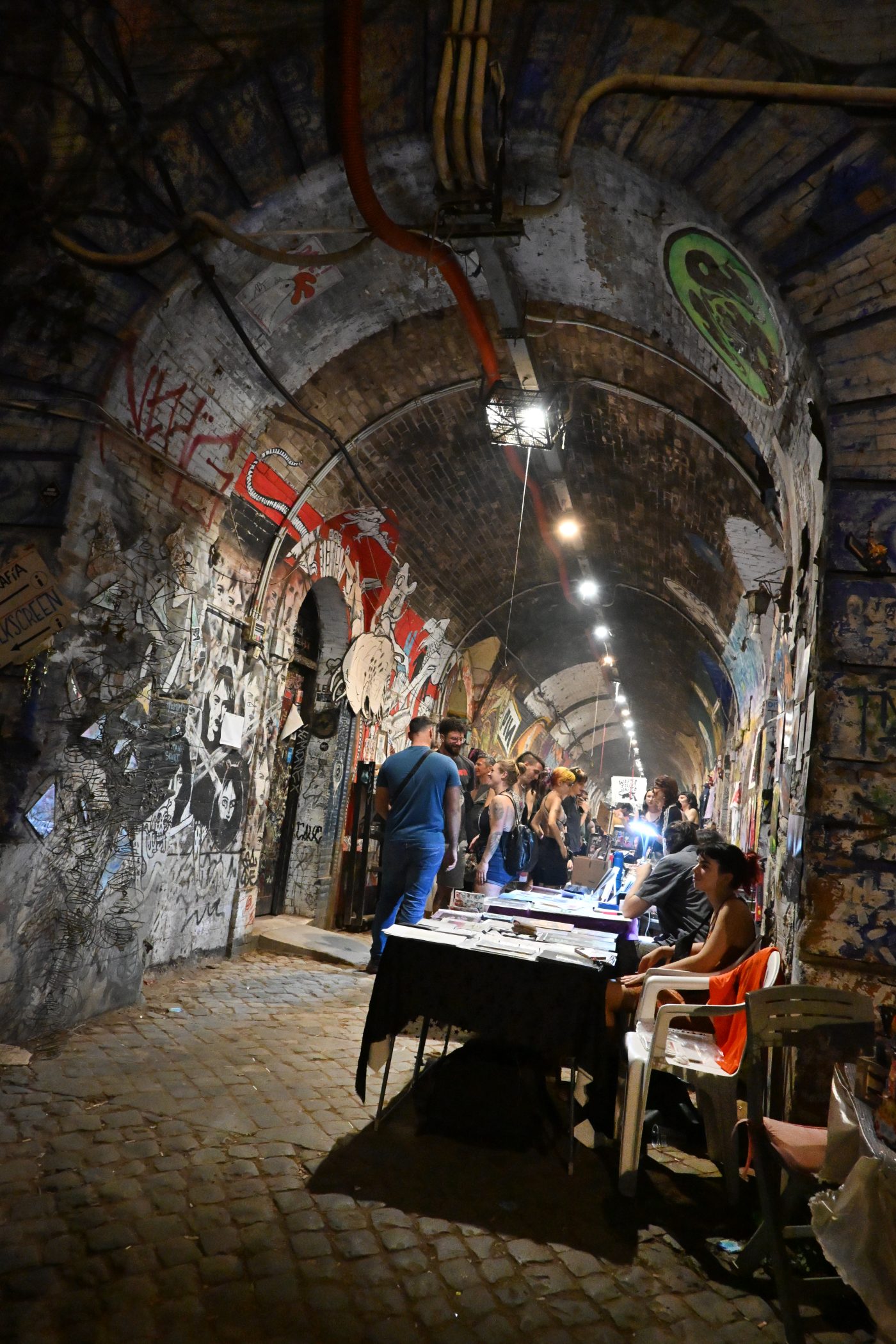
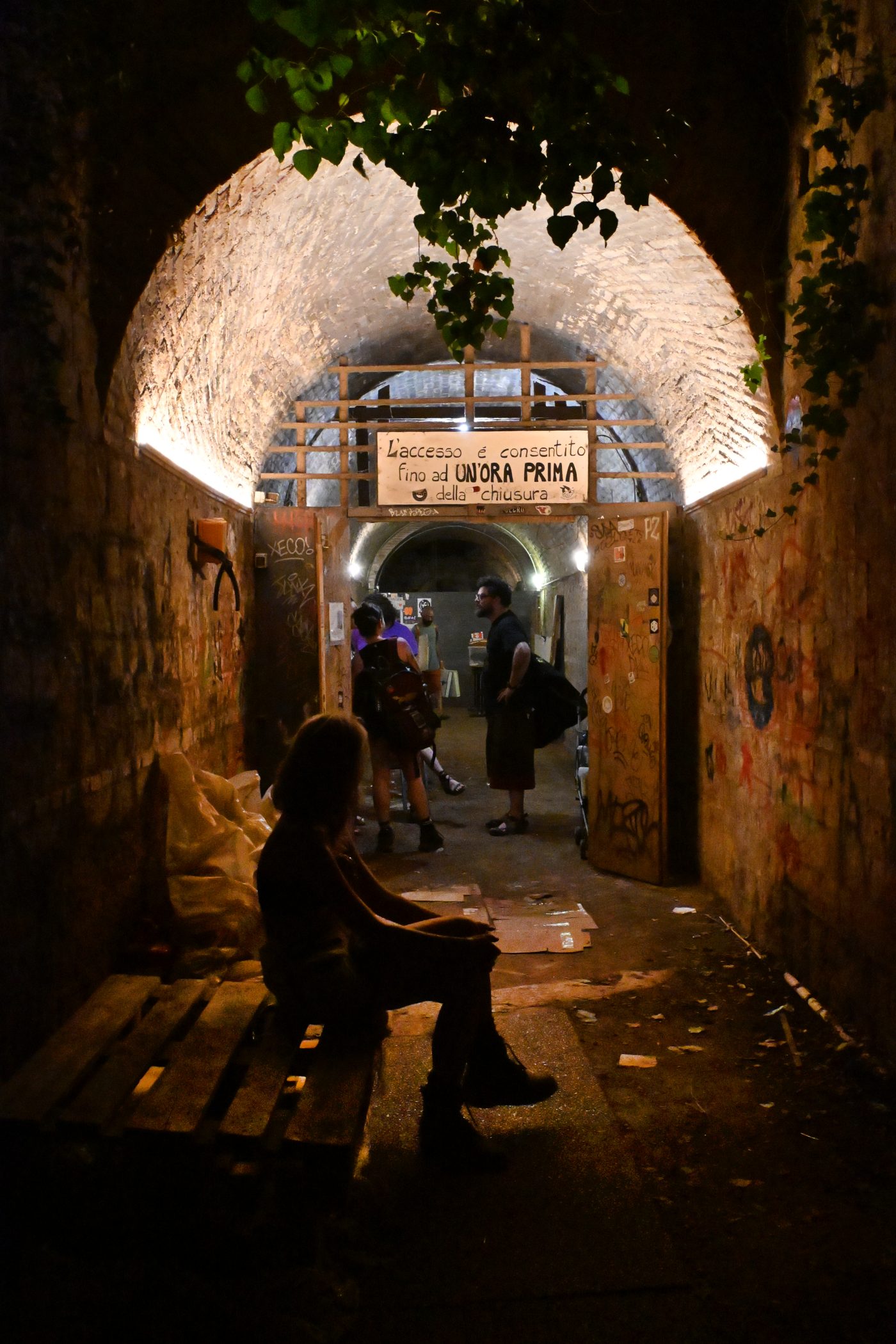
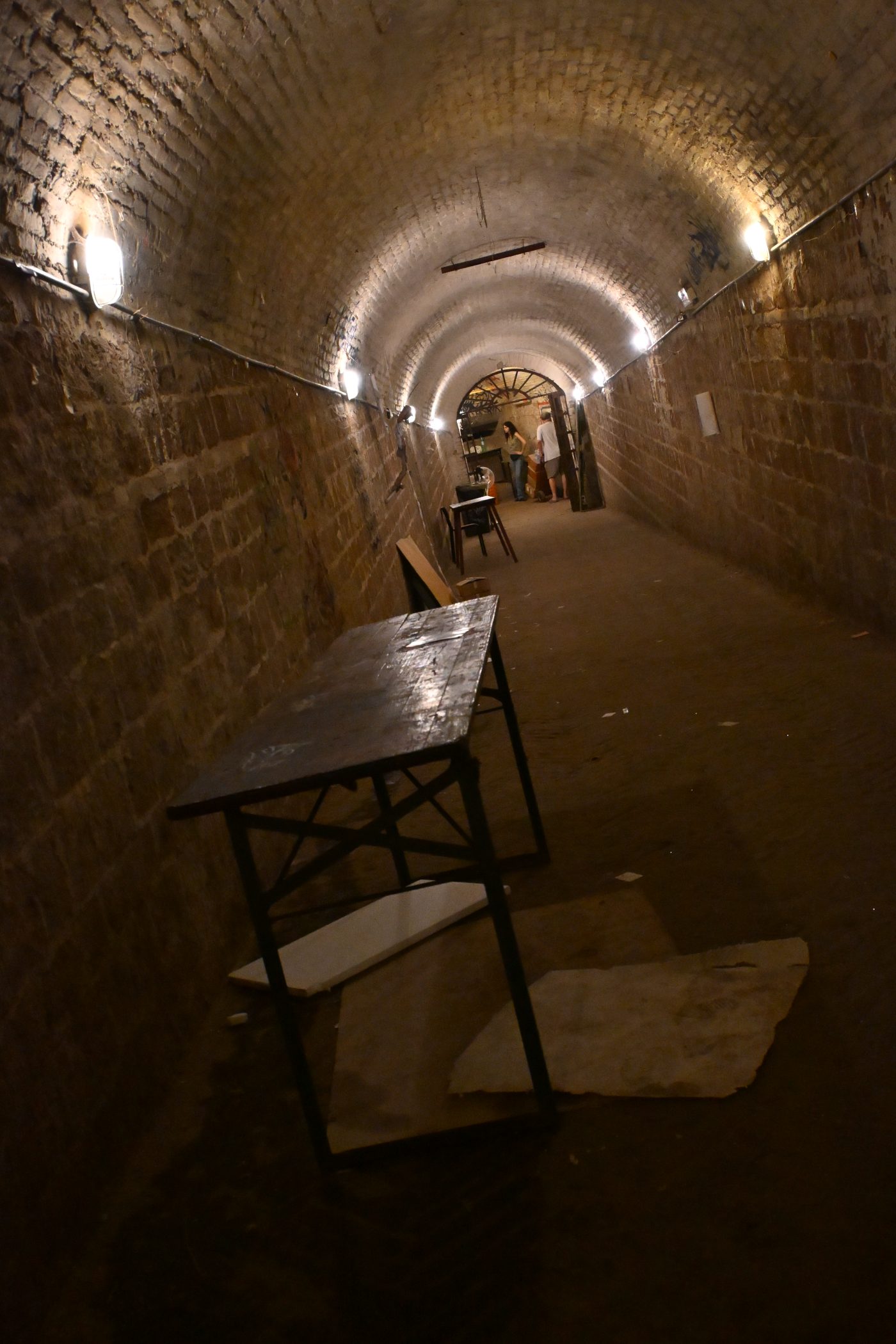
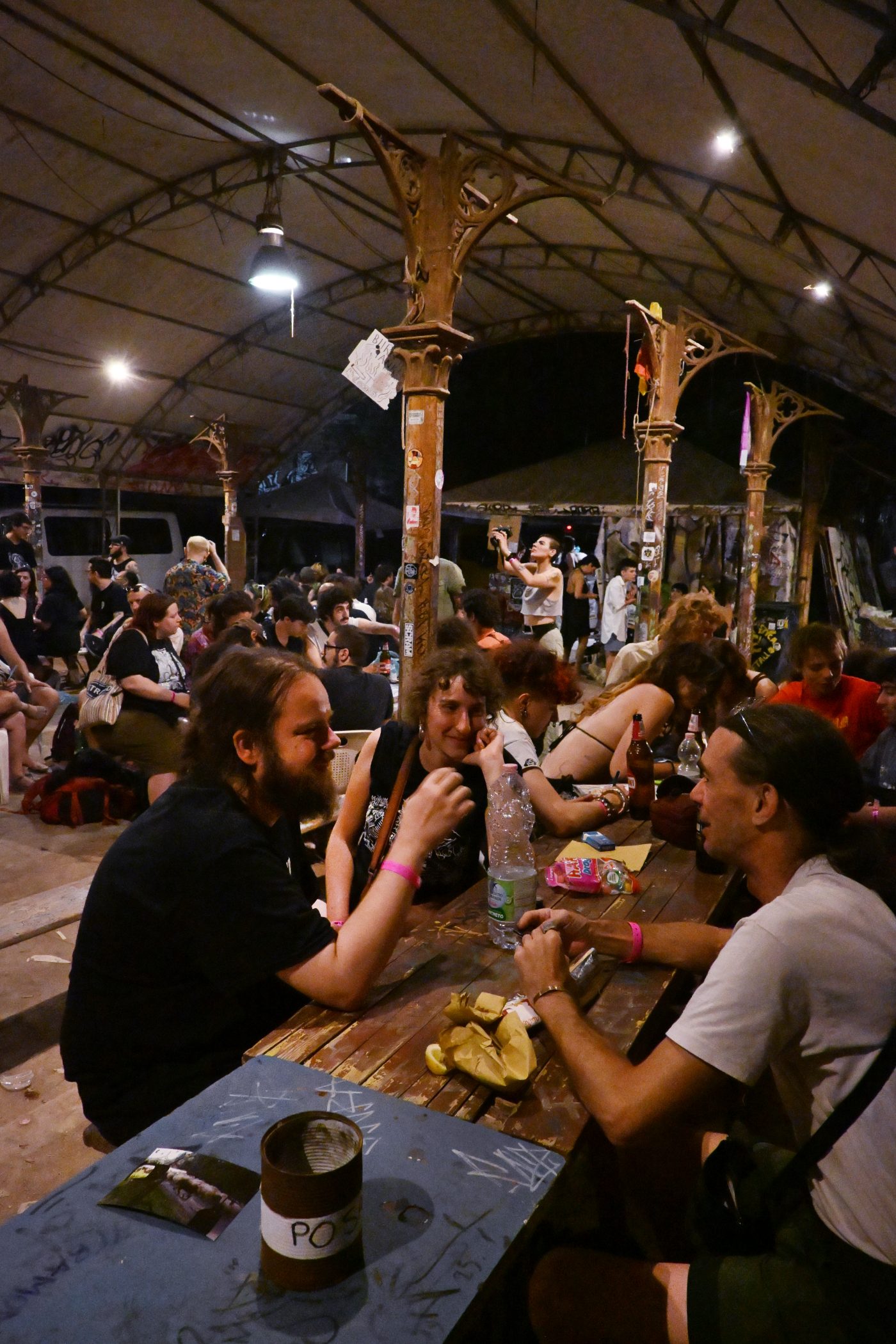
The following is an edited version of a text written by Valerio Bindi about the CRACK! Festival for a collective book published in Portugal by Oficina Arara in 2022.
We as autonomous publishers and as fanzine makers have chosen a way to not fall in the flow of work-production-life-death that is the paradigm of a capitalist society. We are all (or have chosen to be) human beings who see the potential in exploring beauty. We choose to live different lives. The first underground drawings, the first drawings belonging to our world, were those of the wandering wagons bringing the sideshows with their painted banners, where once upon a time you could see freaks. Those figures are very similar to what you may find at CRACK! The festival of underground comics in Rome. They appear in a lot of drawings in our community: freaks, monsters, mutants, exhibited for their difference. You come to CRACK! Festival, not just to show a freshly done production, but to observe that you share the same path with others. It isn't a beautiful thing in itself; it’s the whole of the event that is created that is beautiful. CRACK! Festival is a space, a cave, an arena where you will find other beautiful freaks.
A zine relates not only to a means of communication, but to this idea of potential beauty, the zine becomes a form of biodiversity. The focal point for any fanzine maker is to challenge the system of production of goods, the system of production of entertainment, the system of production of capital; with how money is produced and how work is counted, in terms of hours, how things are traded, how objects are exchanged. Fanzines are about how we are creating as artisans and how we refuse professionalism and the assembly-line. A fanzine is always a critique of capital, and the society of entertainment. It's a critique of a system of distribution, of a system of production. The fanzine is something that, to be made, needs a lot of free time, and mind space. It doesn't need work time: it needs to use wasted time, empty time. It needs an amount of expensive and invaluable time. It's a great luxury to have this empty time. Time is the parceling of our life, as all the time in your life and your existence is transformed into production and money, into economic exchange. When you decide to interrupt this flux, the first thing you do is rip up your working time! Suddenly, you find yourself in a parallel world that doesn't run along with the work ethics of other people.
Doing these things has to do with this idea of beauty that is not the beauty of the object, or the thing you look at, but the beauty of participating and interacting. It may be triggered by things that are not beautiful at all. Or triggered by processes, by mechanisms, by things that are not aiming to reach an end goal. On the other hand, doing this has something to do with refusing to work in a system of money-based exchange. Assuming that the model of beauty changes, the model of production changes, and by necessity the model of narration must change. In your fanzine, as in any comics, the medium can be seen as a two-face mirror. One side reflects the artist and the other one the reader: it must have this characteristic of being an exchange between the two. Fanzines are a designed space where self-definition and authenticity are interwoven in order to generate an exchange with the reader.
“A fanzine is a publishing platform of self expression, that allows communication with all kinds of people.” Abraham Diaz (¡Joc! Doc Ediciones)
Diaz says it is not an object, it is a platform, it is an area of exchange, of autonomous expression. It allows communication, this two-way system that goes and comes back, this relationship, with all kinds of people. A fanzine is made to communicate, it transmits life directly from the creator to the public through the fact that it is made by hand, and if taken in the hands of a reader, this object ignites this spark of life. A festival is a space of confrontation with an audience. It requires a lot of work: perception of the artworks and experience of the artist's approach. In this exchange the author becomes aware of what he has given and the audience becomes aware of what it has received.
The audience attending independent and autonomous festivals is very sensitive: it has developed this ability to relate and to interact. People come to the next festival more open, and more ready to receive other kinds of stimuli, constantly growing in terms of artistic sensitivity and political consciousness. This exchange is based on the shared perception of the present time, and on the criticism towards the mass production of all cultural goods inside the capitalistic system. These festivals are a space of participation. They are all self-convened, that is, the authors and collectives have to decide on their own to go there. The responsibility of that movement, of that exhibition, is left to the artist, and to nobody else. The way this person will show the artworks is self curated. The festival just has to facilitate the journey. These kinds of festivals aim to be self-produced, to avoid entering an economic mechanism that overdetermines the situation. People who ask to participate, are hosted. They are given a space to sleep, a space to eat, a space to exhibit and to share their productions. Often there is a workshop area where it is possible to produce artworks on site, so one can do the whole production process in there. As with any self-determined situation, this one is extremely fragile. Even the open and squatted space that host this kind of festival (as Forte Prenestino CSOA hosts Crack!) is often an impermanent illegal space held by the people that participate in the organization of the events. It can be the subject of any, more or less, violent transformations; even the unlucky possibility of being shut down by authority. Those spaces are based on a capacity to share, to accept different levels of freedom and to ensure that there is a space of consensus: a shared agreement about use of time, space and representation. These elements are all essential to create this autonomous platform and to keep these events alive.
Crack! is a decolonized and self-managed open space, a self-generated underground arena for a different idea of beauty.
The post A visit to Rome’s 2025 Crack! Festival: ‘Fascists will not stop us from drawing’ appeared first on The Comics Journal.

No comments:
Post a Comment